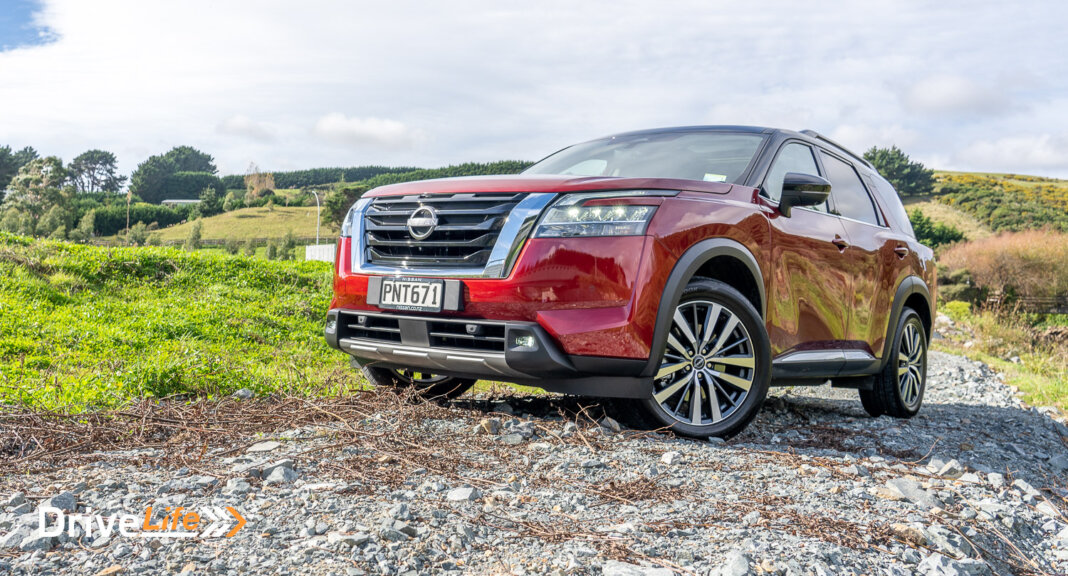It may have been six long years since I last drove one, but even after hundreds of car reviews in that time, I still have fond memories of the V6 Nissan Pathfinder. That smooth V6, plenty of room, plenty of gadgets and an excellent drive on a ski trip meant a car that did what it was designed for.
For 2023, Nissan has “comprehensively redesigned” the Pathfinder. Gone is the CVT transmission (it wasn’t a bad CVT, but let’s be honest – no love lost there) and in its place is a ‘normal’ 9-speed automatic gearbox. That’s a great start.
The design of the car is completely different too, with Nissan saying it’s a ground-up redesign, so nothing has been left untouched. Nissan’s advanced Pro-PILOT semi-autonomous driving system also makes its debut on Pathfinder as a standard inclusion on both models.
Testing out the all-new Pathfinder would include a 600km return trip to Hawera to work on our project car, so in all, we’ll be driving the car for around 1,000km.
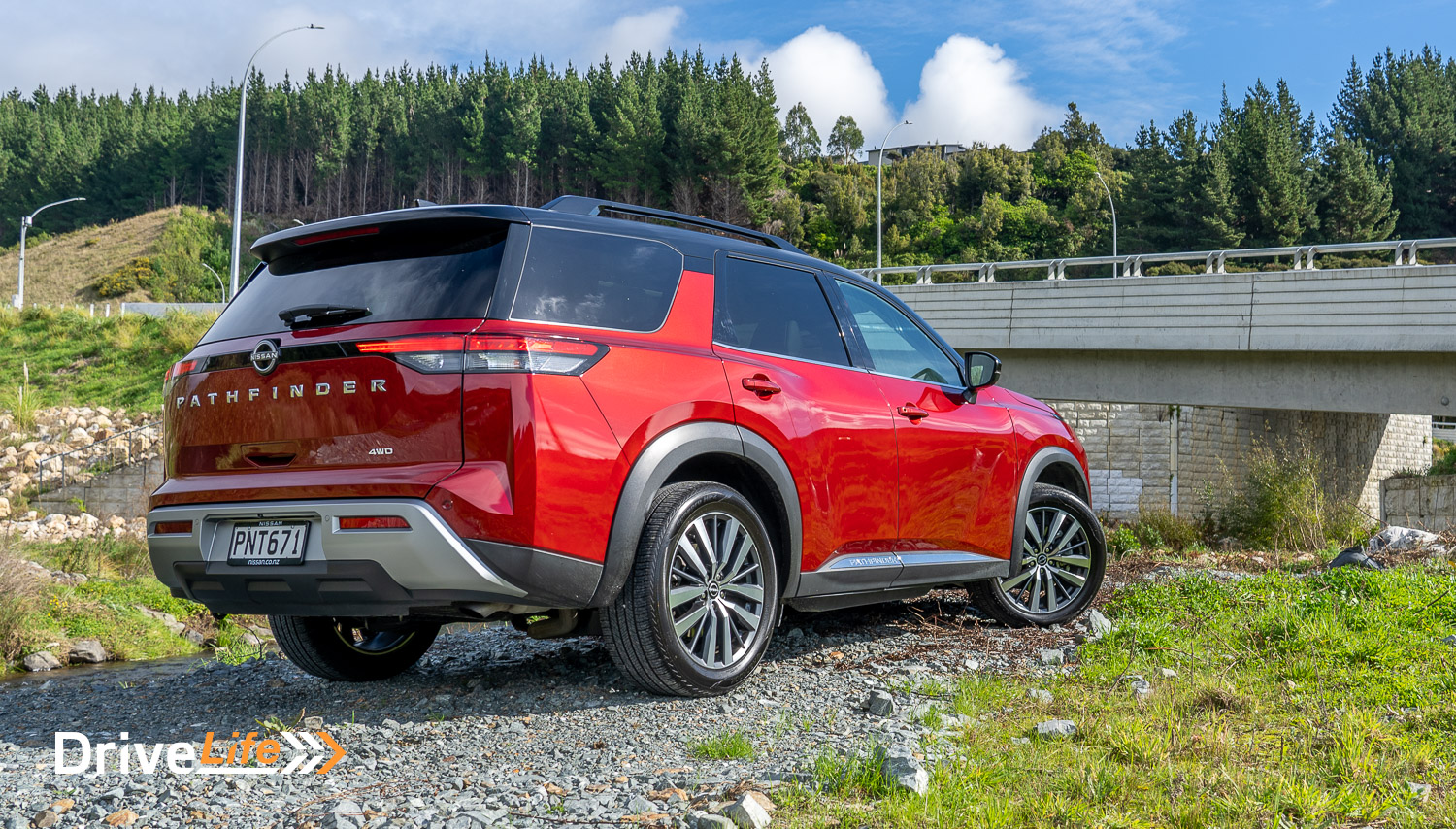
What We Like and Dislike About The 2023 Nissan Pathfinder Ti-L
| What we like | What we don’t like |
| Smooth, quiet engine Transmission Interior space Design Feature list Feeling of luxury Storage Seat comfort Fuel economy HUD | Auto-Pilot steering High loading height Too much beeping Pricier than its direct competition |
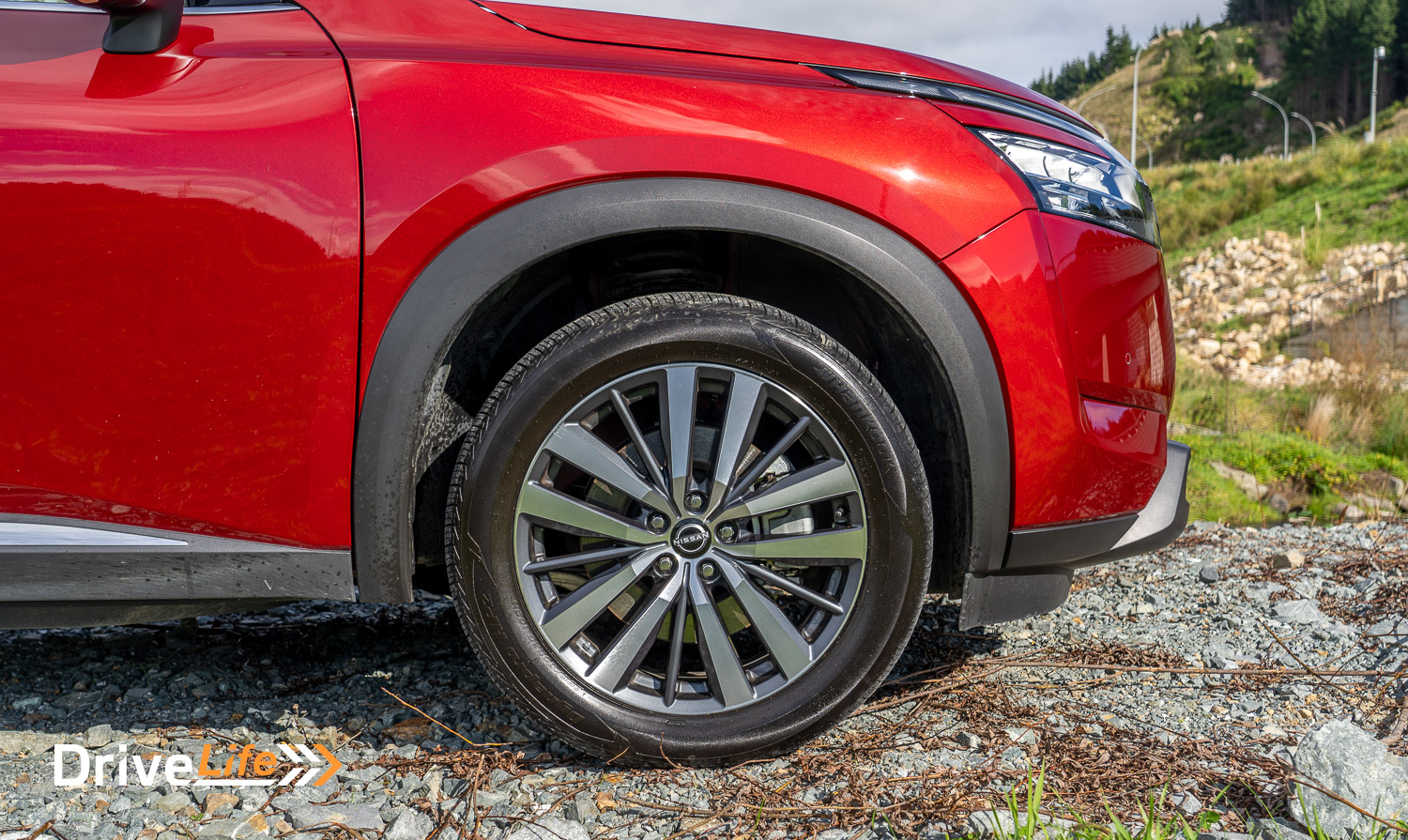
What’s In The 2023 Nissan Pathfinder Range?
You get to choose from two Pathfinder models:
- Ti $83,490
- Ti-L $88,490 (tested)
Both have the same powertrain, a 3.5-litre, V6 petrol motor that manages 202kW of power and 340Nm of torque. All-wheel drive is standard, as is a 9-speed automatic transmission.
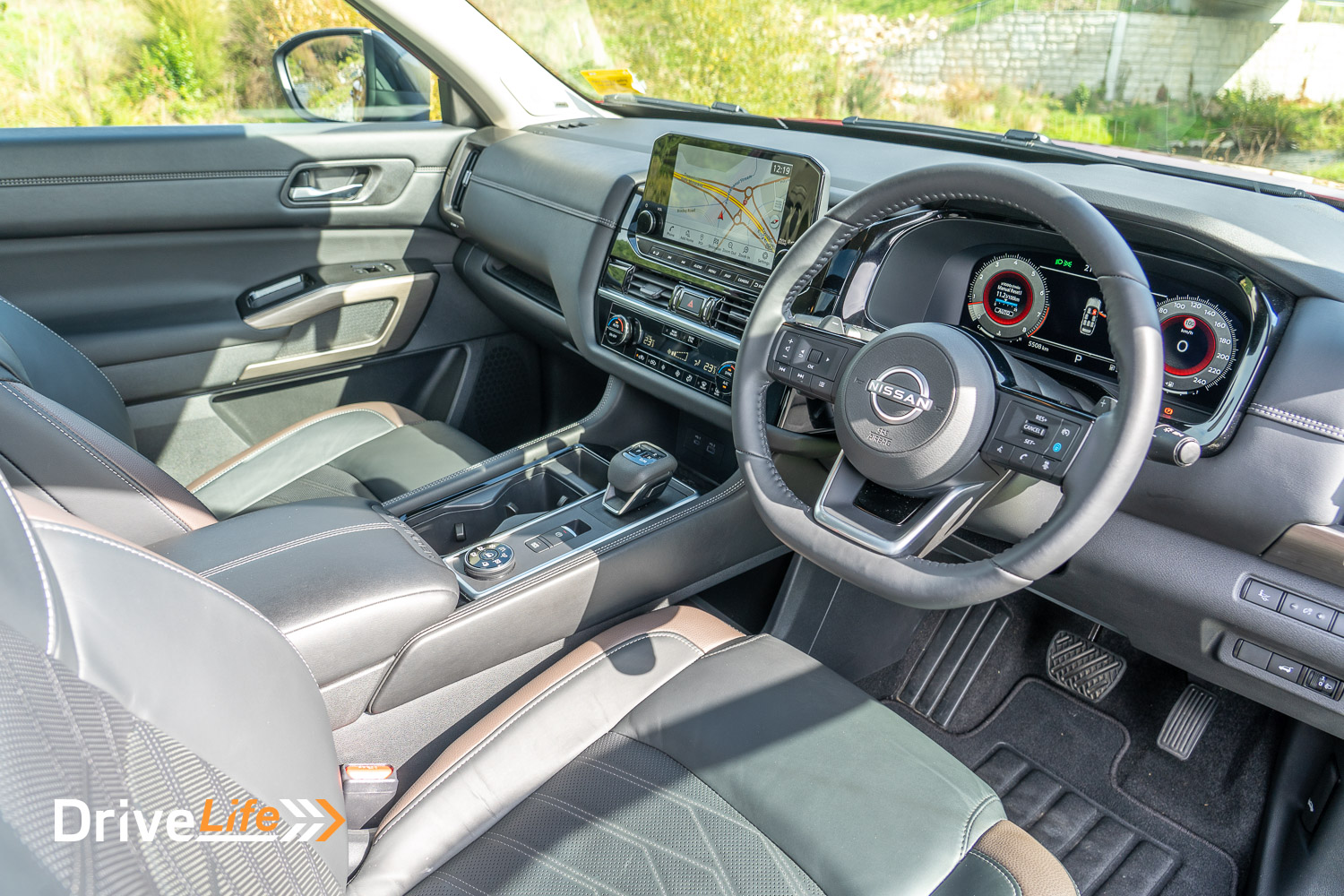
2023 Nissan Pathfinder Standard Equipment Highlights
- 8-seat configuration (2:3:3)
- Intelligent 4×4 with seven drive & terrain modes
- EZ FLEX seating system with Latch and Glide
- Tri-zone automatic climate control
- Heated front seats
- 10.8″ Head-Up Display
- 9.0″ touchscreen display
- Satellite navigation
- Android Auto & wireless Apple CarPlay
- 7.0″ TFT Advanced Drive-Assist Display instrument cluster
- Rearview camera & rear parking sensors
- Intelligent Forward Collision Warning
- Intelligent Emergency Braking with junction assist & pedestrian/cyclist detection
- Privacy Glass (second row & rear windows)
- Silver roof rails
- Leather accented seat trim
- Intelligent Cruise Control
- LED head & tail lights
- 13-speaker BOSE premium audio system
- Built-in rear door sunshades
- Heated second-row outboard seats
- Automatic dimming internal rear view mirror
- Wireless phone charger
- Silver roof rails
- 18-inch Machine finished alloy wheels
Moving to the Ti-L adds:
- 7-seat configuration (2:2:3)
- Second-row slide, recline & fold down captain’s chairs
- 12.3-inch TFT Advanced Drive-Assist instrument cluster display
- Intelligent rear-view mirror
- Tilt & slide electric sunroof with panoramic glass roof
- Quilted leather-accented seat trim
- Memory system (driver seat, steering wheel & external rear vision mirrors)
- 12-Way power driver seat
- 4-Way power passenger seat
- Ventilated front seats
- Automatic rain-sensing wipers
- Chrome side moulding
- 20-inch machine-finished alloy wheels
- Ambient interior lighting
Since our review car had no optional equipment, the retail price is $88,490.
You get to pick from 7 colours for your Pathfinder:
- Super Black
- Brilliant Silver
- Gun Metallic
- Obsidian Green
- Scarlet Ember
- Ivory Pearl
- Deep Ocean Blue Pearl
There’s also a selection of two-tone colours:
- Ivory Pearl with a black roof
- Scarlet Ember with a black roof
- Gun Metallic with a black roof
- Boulder Grey with a black roof
- Obsidian Green with a black roof
For a full list of specs and options available for the Nissan Pathfinder Ti-L head on over to the Nissan New Zealand website.
How Does The 2023 Nissan Pathfinder Ti-L Compare To Its Competition?
When we last tested a Pathfinder in 2017, 4 on the table were V6 petrol-powered models, and now there is just the Pathfinder, standing alone.
We’ve stuck to medium-large, petrol-powered 7-seat SUVs for our comparison table.
All prices below exclude the refund or additional cost of the New Zealand Clean Car Programme.
| Make/ Model | Engine | Power/ Torque kW/Nm | Seats | Fuel L/100km | Towing Capacity | Boot Space, litres | Price (excl CCP) |
| Volvo XC90 B5 Momentum | 2.0-litre 4-cylinder petrol twin-turbo hybrid | 183/350 | 7 | 8.2 | 700/2,400 | 651 | $101,900 |
| Nissan Pathfinder Ti-L | 3.5-litre, V6 petrol | 202/340 | 7 | 11.7 | 750/2,700 | 557 | $88,490 |
| Skoda Kodiaq RS | 2.0-litre 4-cylinder petrol-turbo | 180/370 | 7 | 8.3 | NA/2,000 | 630 | $84,990 |
| Kia Sorento AWD Premium | 1.6-litre, 4-cylinder petrol-hybrid | 195/350 | 7 | 6.0 | 750/1,650 | 608 | $84,990 |
| Hyundai Santa Fe 2.5 Petrol Limited AWD | 2.5-litre, 4-cylinder petrol | 132/232 | 7 | 9.7 | 750/2,000 | 571 | $82,990 |
| Toyota Highlander ZR Hybrid | 2.5-litre, 4-cylinder petrol-hybrid | 142/242 | 7 | 6.2 | 700/2,000 | 552 | $78,290 |
| Mazda CX-9 Takami | 2.5-litre, 4-cylinder, petrol-turbo | 170/420 | 7 | 8.8 | 750/2,000 | 742 | $74,690 |
Note there is no Toyota Highlander stock until late 2023.
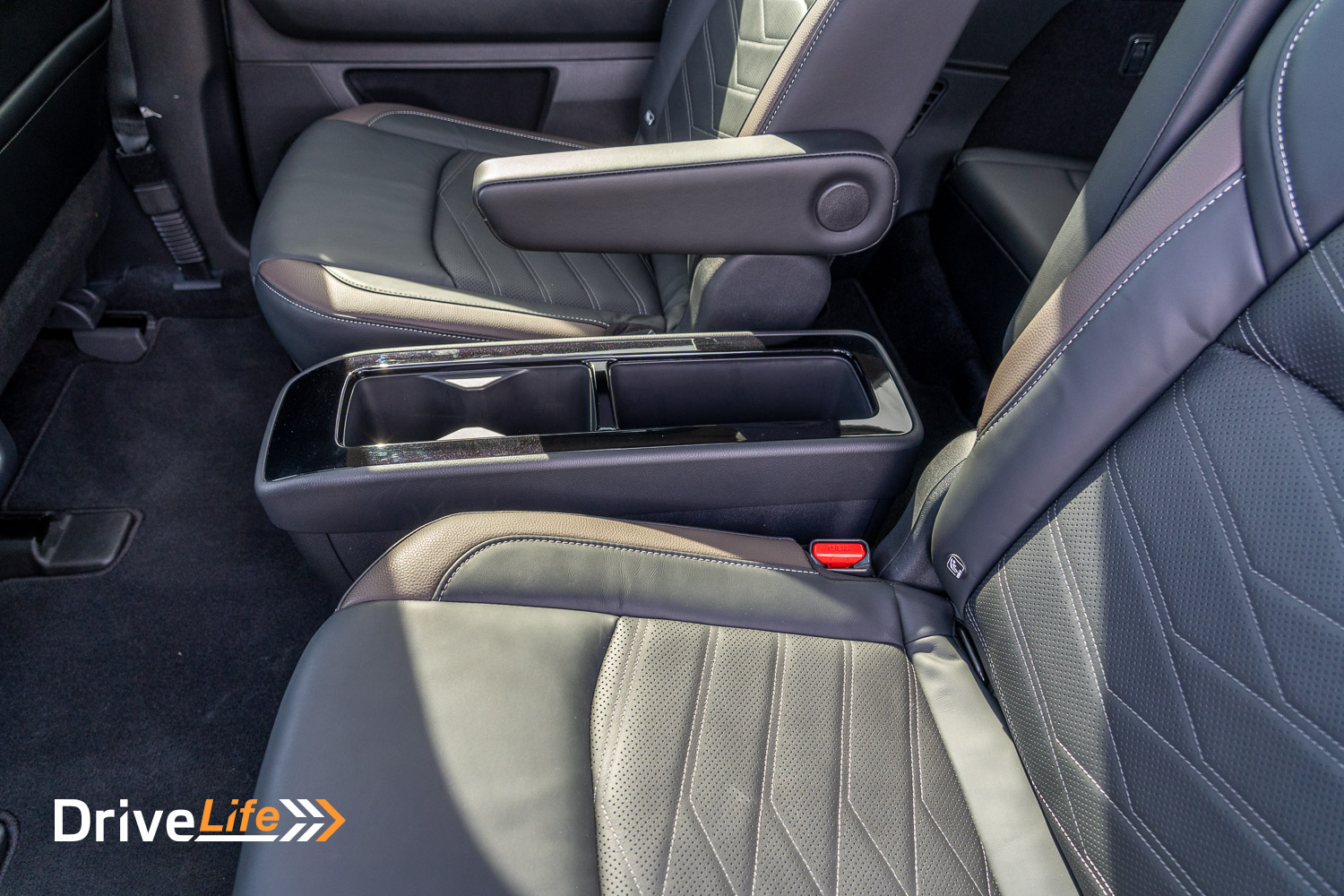
First Impressions Of The 2023 Nissan Pathfinder Ti-L
Well, when Nissan says it’s a completely new car, they are right. The new model is a complete departure from the old one and seems to have expanded in all directions.
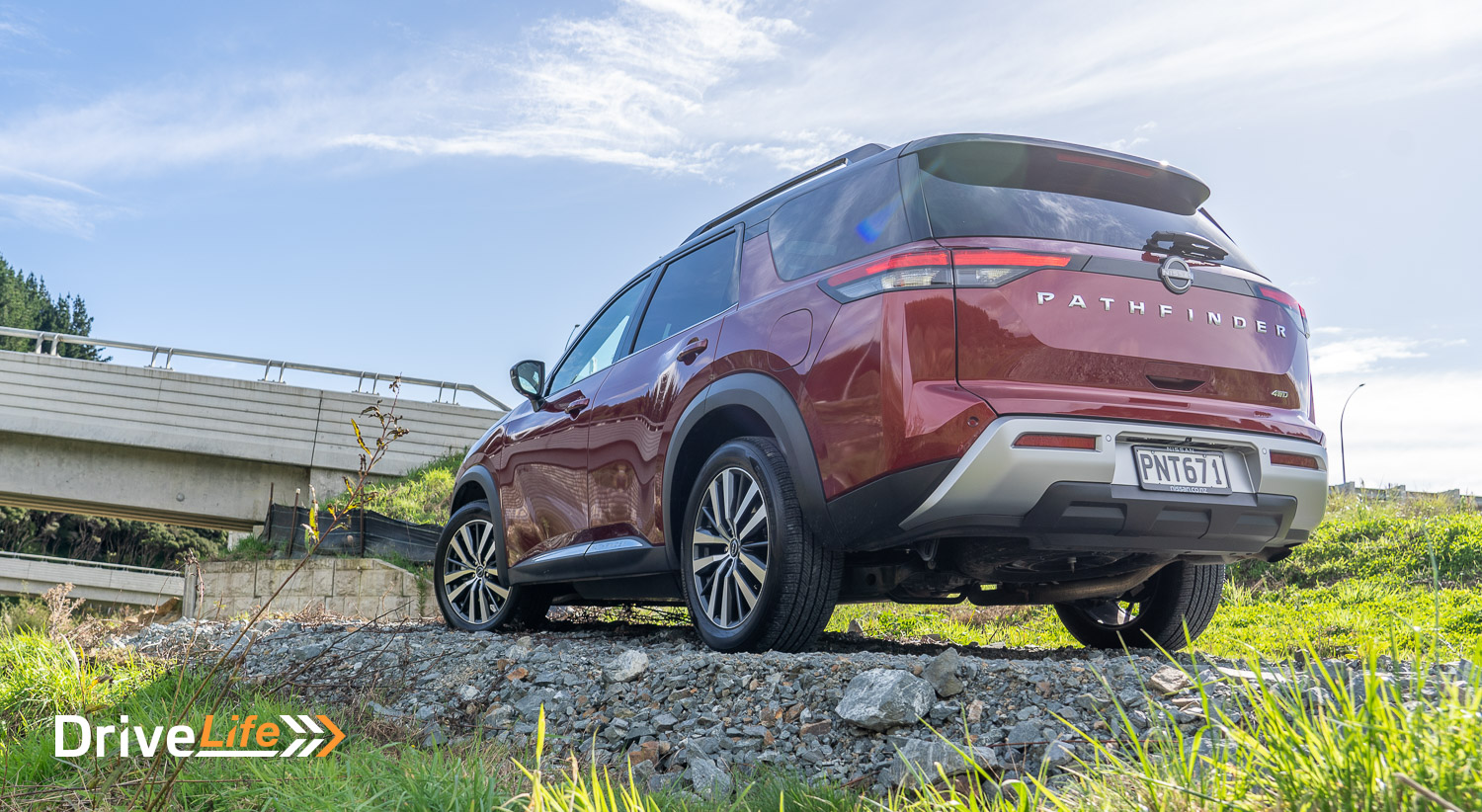
For me, it’s now looking a bit like the new Range Rover, with lots of smoothed-out edges. That front looks complicated with so many lines and angles, but it still works. It’s certainly something different with that gap between the daytime running lights and the headlights. Finished in Scarlet Ember, this part of the Pathfinder really stood out on our test car.
With heavily tinted rear-side windows, side on the Pathfinder looks tall with that high waistline, floating rear window and bulging guards.
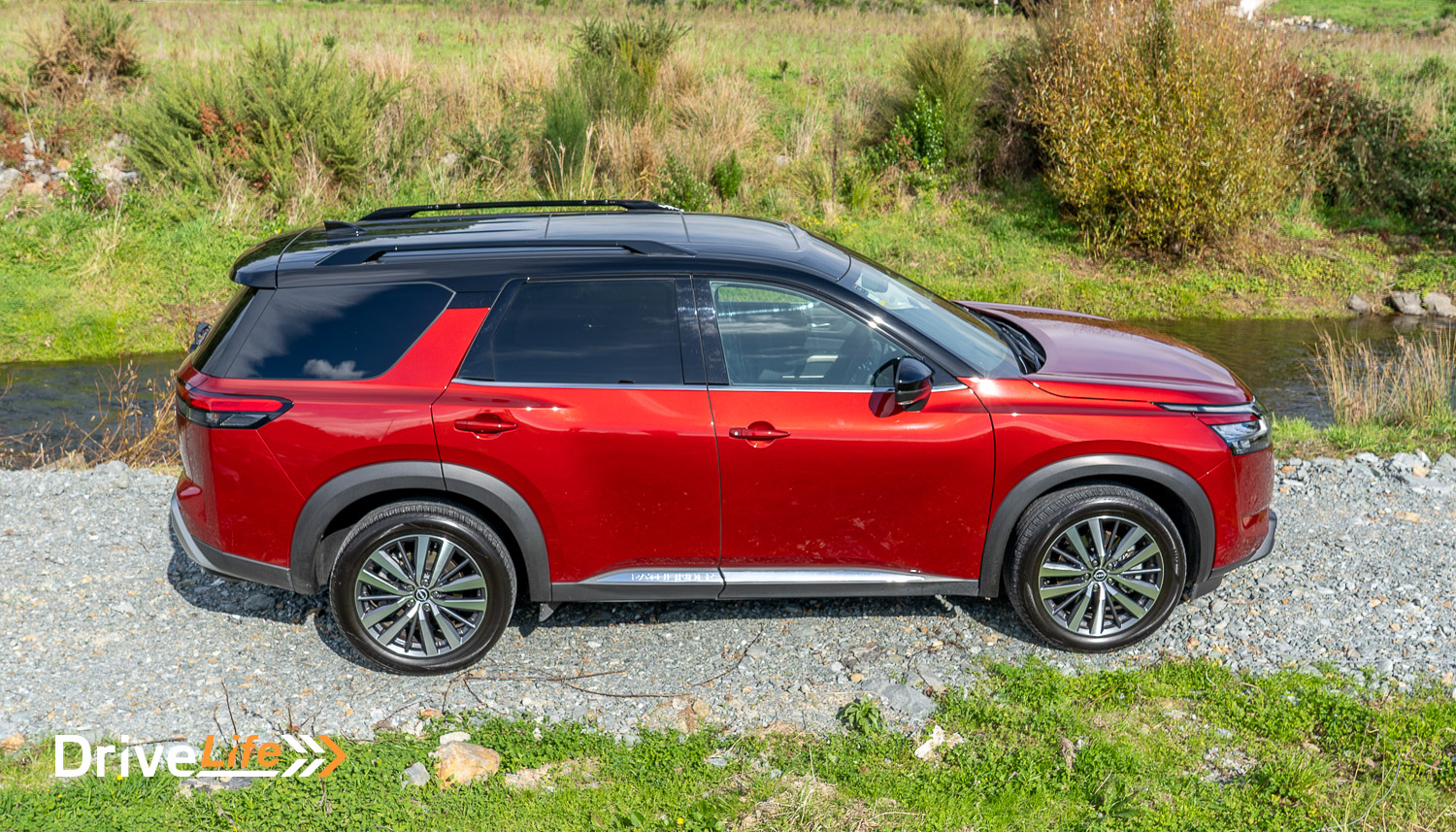
Around the back, I see more hints of Range Rover with sharp, crisp lines, a heavily tinted rear window and a large roof spoiler. The 2023 Nissan Pathfinder looks great from any angle.
What’s The Interior Like In The 2023 Nissan Pathfinder Ti-L?
Without a doubt, the interior is a highlight of the 2023 Nissan Pathfinder. There’s a sense of both luxury and space as soon as you open any door. The top-spec Ti-L we are testing has a huge panoramic sunroof as standard, and it lets in an enormous amount of natural light. Add to this that Nissan had the sense to have headlining and pillars finished in beige, and this leaves passengers with a feeling of gallons of room. And it’s not just a feeling – there is plenty of room for all here, with a huge amount of headroom and width in the cabin.
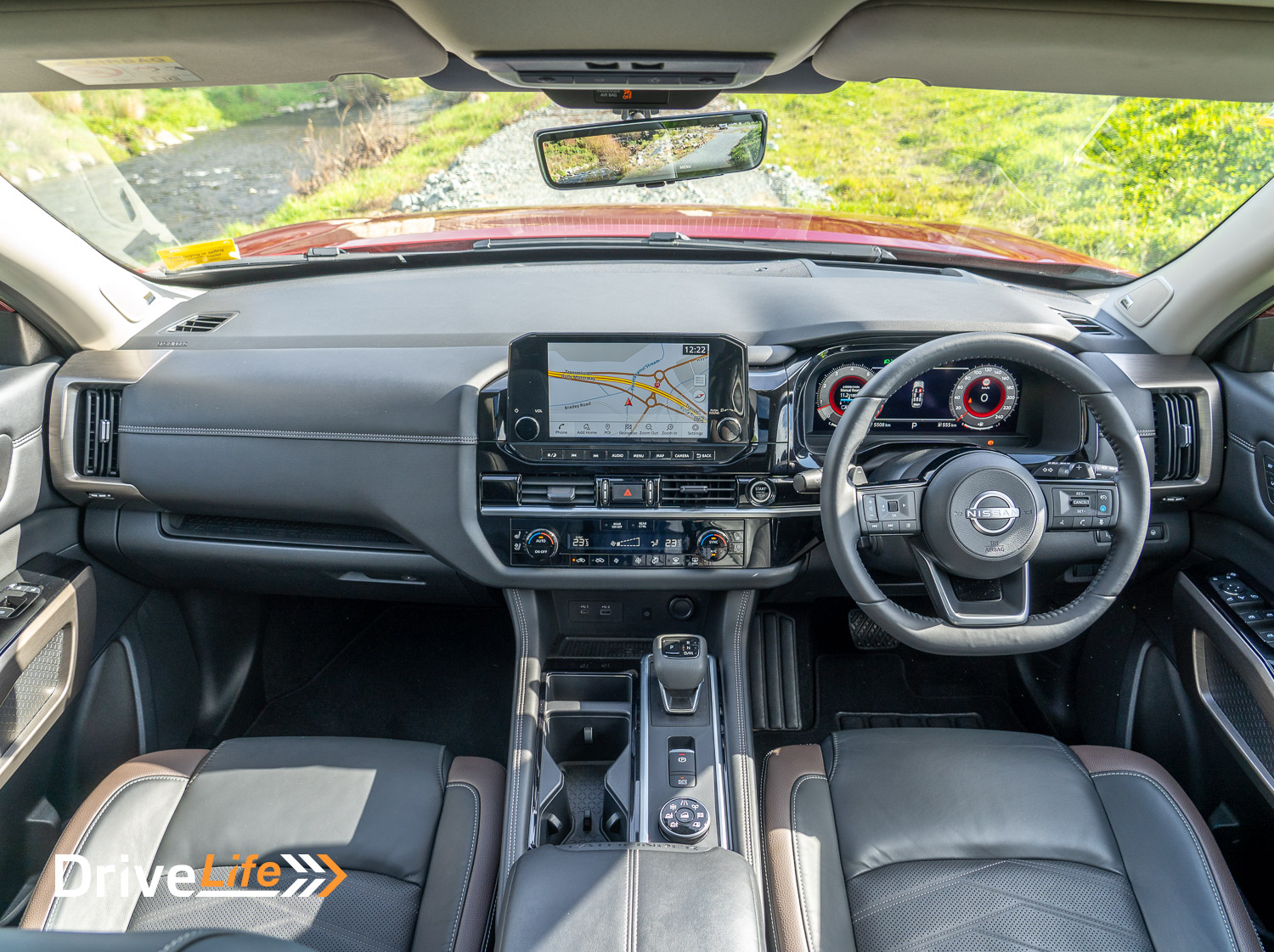
That panoramic roof has an electric blind of course, and looking around the cabin, there’s little that this model is missing in equipment levels. The front seats are heated and cooled, the rear middle row is also heated. There’s tri-zone AC, a Qi wireless phone charger, electric steering wheel tilt/telescope adjustment, a digital rearview mirror, a power tailgate, and a 360-degree camera. There’s more but it’s easier to say that really it’s just a heated steering wheel that’s missing on the list. The 2023 Nissan Pathfinder Ti-L seems to have everything.
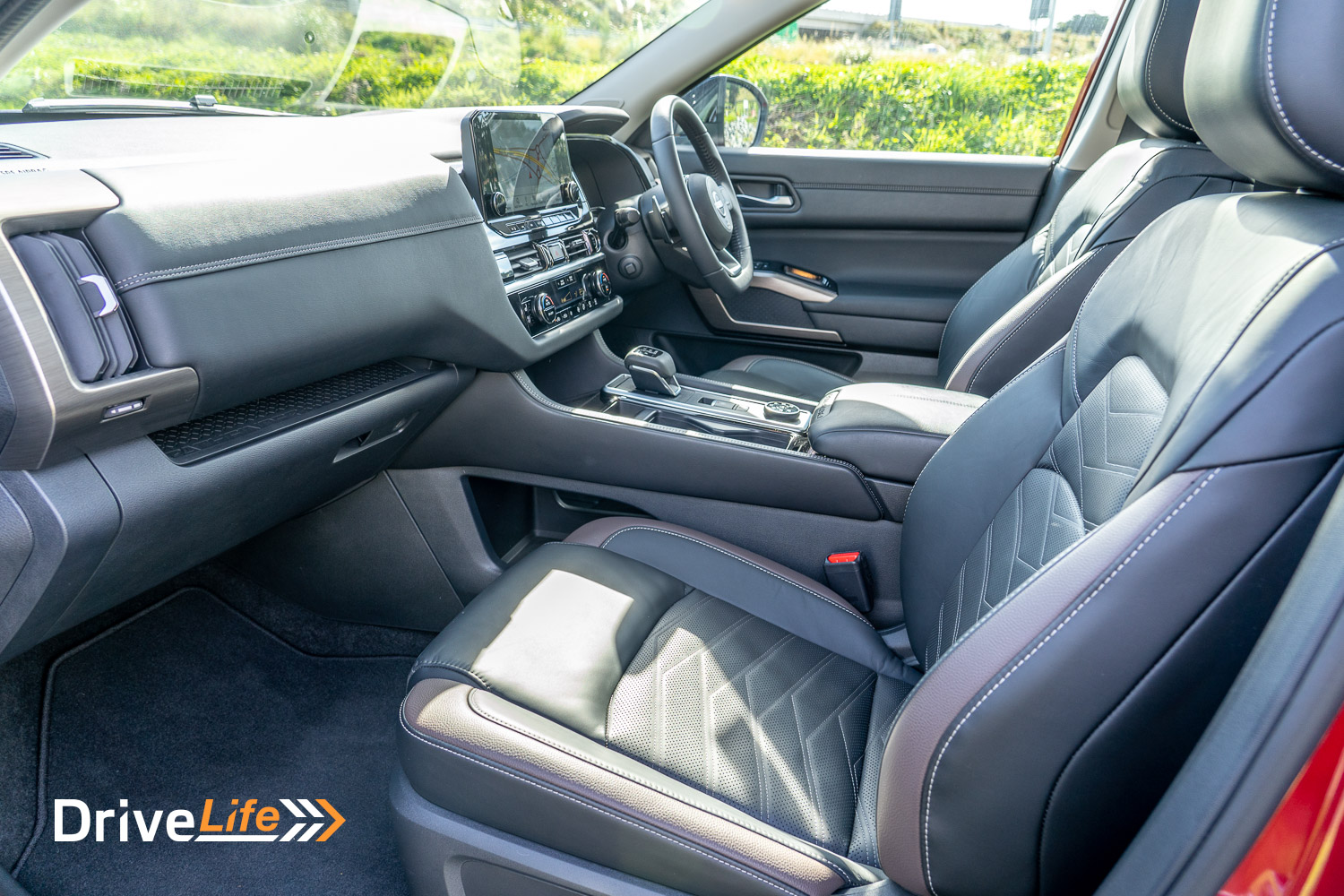
The seats are certainly something to write home about. They have grey contrasting stitching for a touch of class, there are pleats in them and they have a brown finish to the edge. They look excellent and feel great. Since we’re in the top-spec model, that means we ‘only’ have seven seats, but that also means the second row is set up like Captain’s Chairs, with armrests and a removable centre console. They slide too, giving the third-row passengers more legroom when needed.
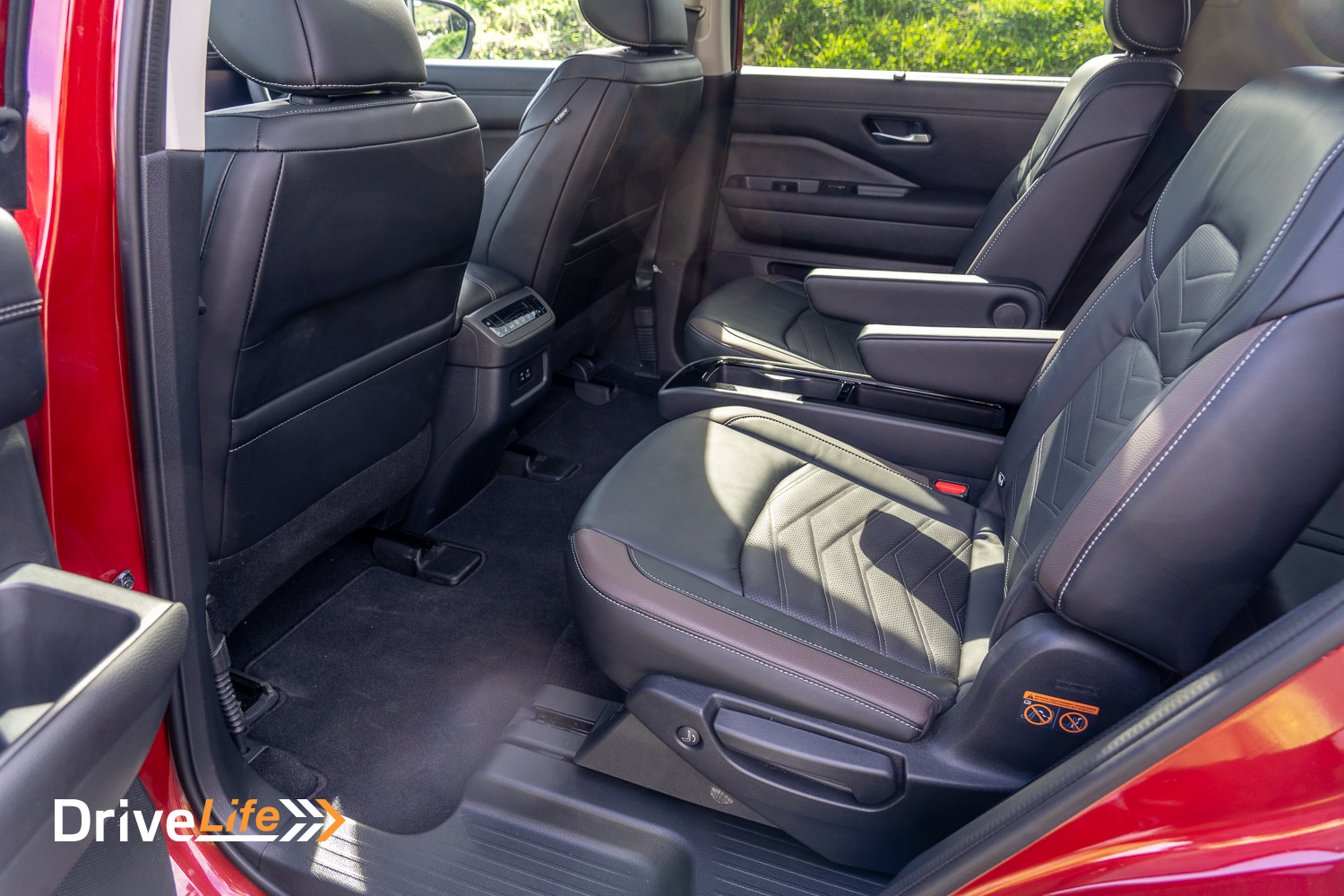
That second row also gets window blinds in the doors, great for those with babies and toddlers to keep safe from the sun. The middle row has access to its own AC controls at the rear of the front centre console, along with the heated seat controls.
Third-row passengers aren’t quite as well spoilt, with a single USB-A port, but with a couple of cup holders each, at least. Legroom in the third row is acceptable when the middle row is extended back, but obviously much better when the middle row is forward. Your lanky teenage children might not enjoy it back there, but it’s usable.
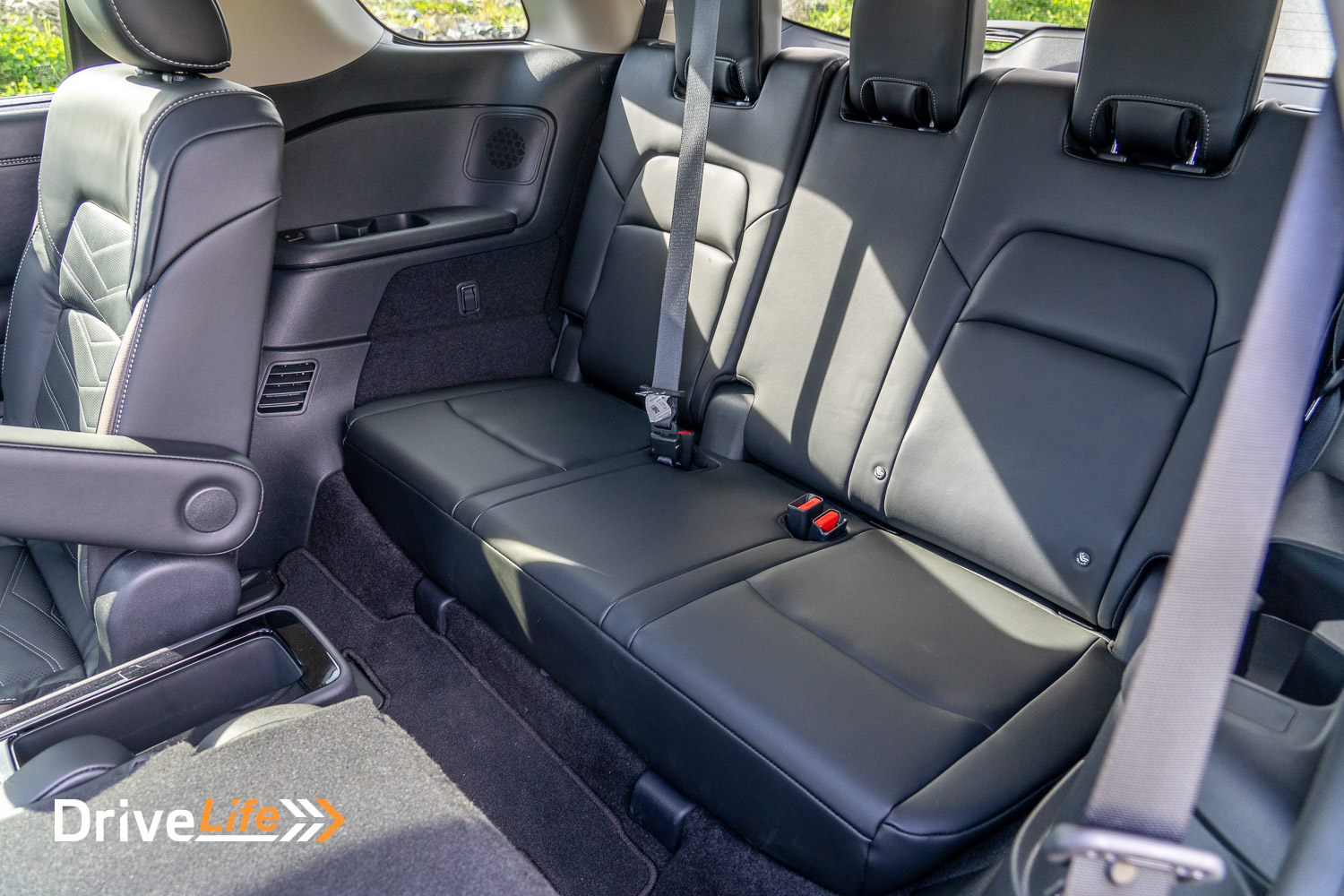
Back up front, things are pretty darn nice. The finish is great, there’s a decent 9” centre screen, and the front-seat passenger has a cellphone shelf above the glovebox. That grey contrasting stitching extends to the console and dashboard, too. From either front seat, all the finishes are soft touch with some excellent materials used. The top third of the doors are finished in soft-touch fabrics, with hard plastics being reserved for the lower third, where it’s needed.
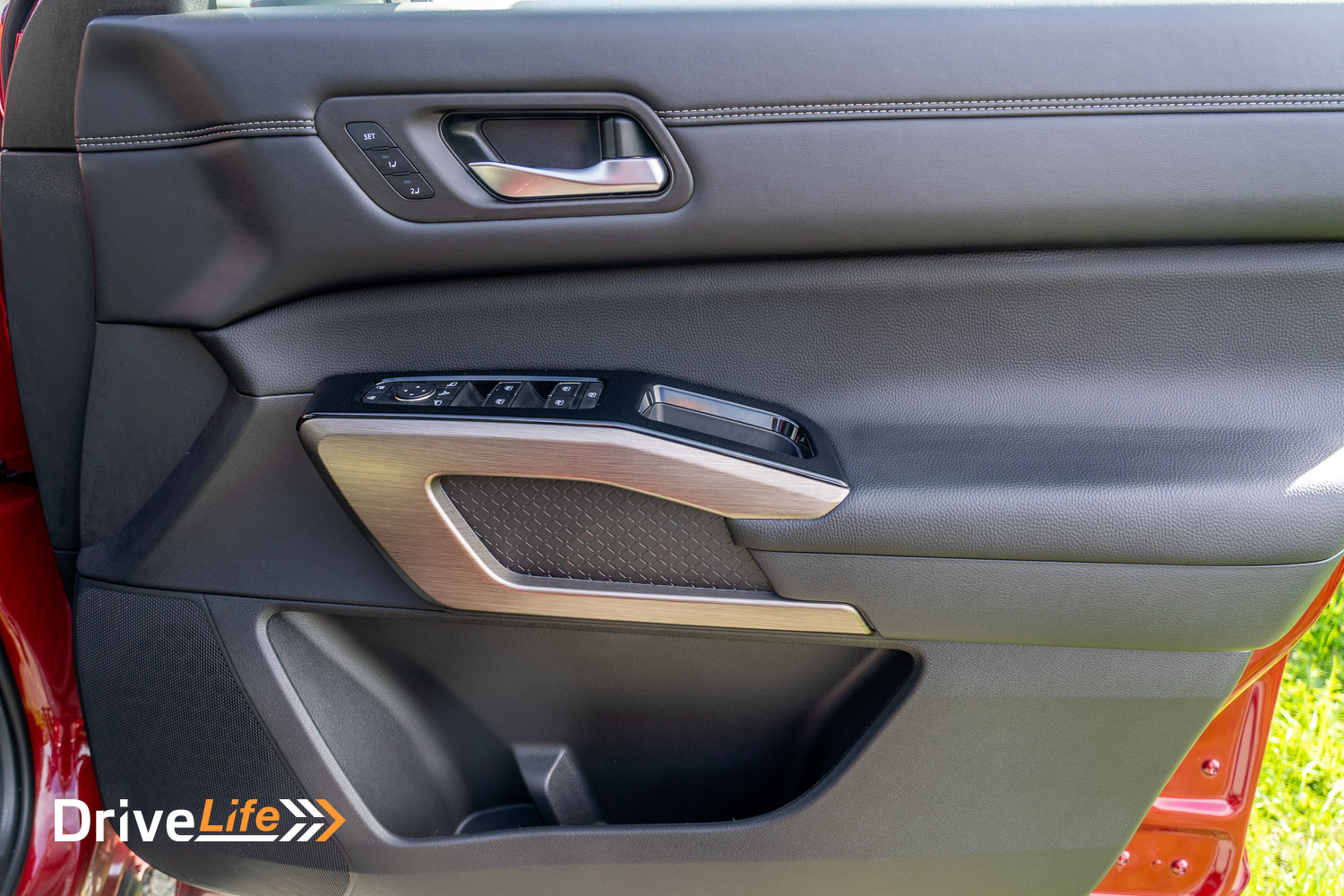
Front seat passengers get access to single USB-A and USB-C ports and a 12-volt socket. There’s a large centre console cubby; it’s very deep and seems to go all the way to the floor. Under the front of the centre console is a big storage area and in fact, there are spots all over the cabin to store stuff for a long trip.
The gearshift isn’t traditional but it’s super easy to use. To its left is another little storage thing which is perfect for slotting your cellphone into and holding it upright – that is of course, if you aren’t using the wireless charging pad.
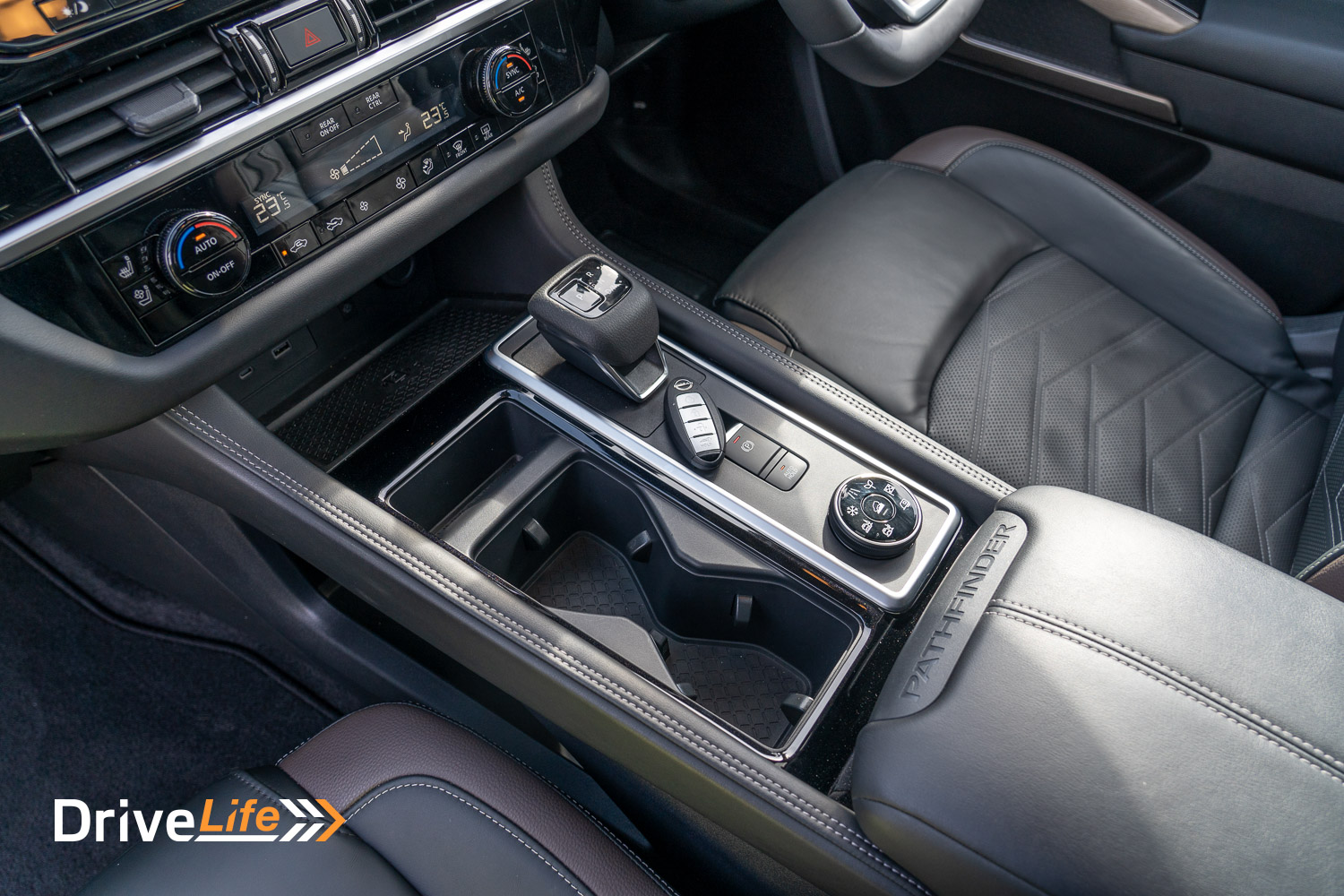
Below the screen are the controls for the aircon, and I love that Nissan has stuck with physical knobs to control AC. These include physical buttons for seat heating/cooling, too. It might seem weird to mention this, but with so many manufacturers moving to AC controls (and seat heating) via the touchscreen, having actual controls for these is excellent. It just works. These physical knobs include ones for audio on/off/volume, and track/station change.
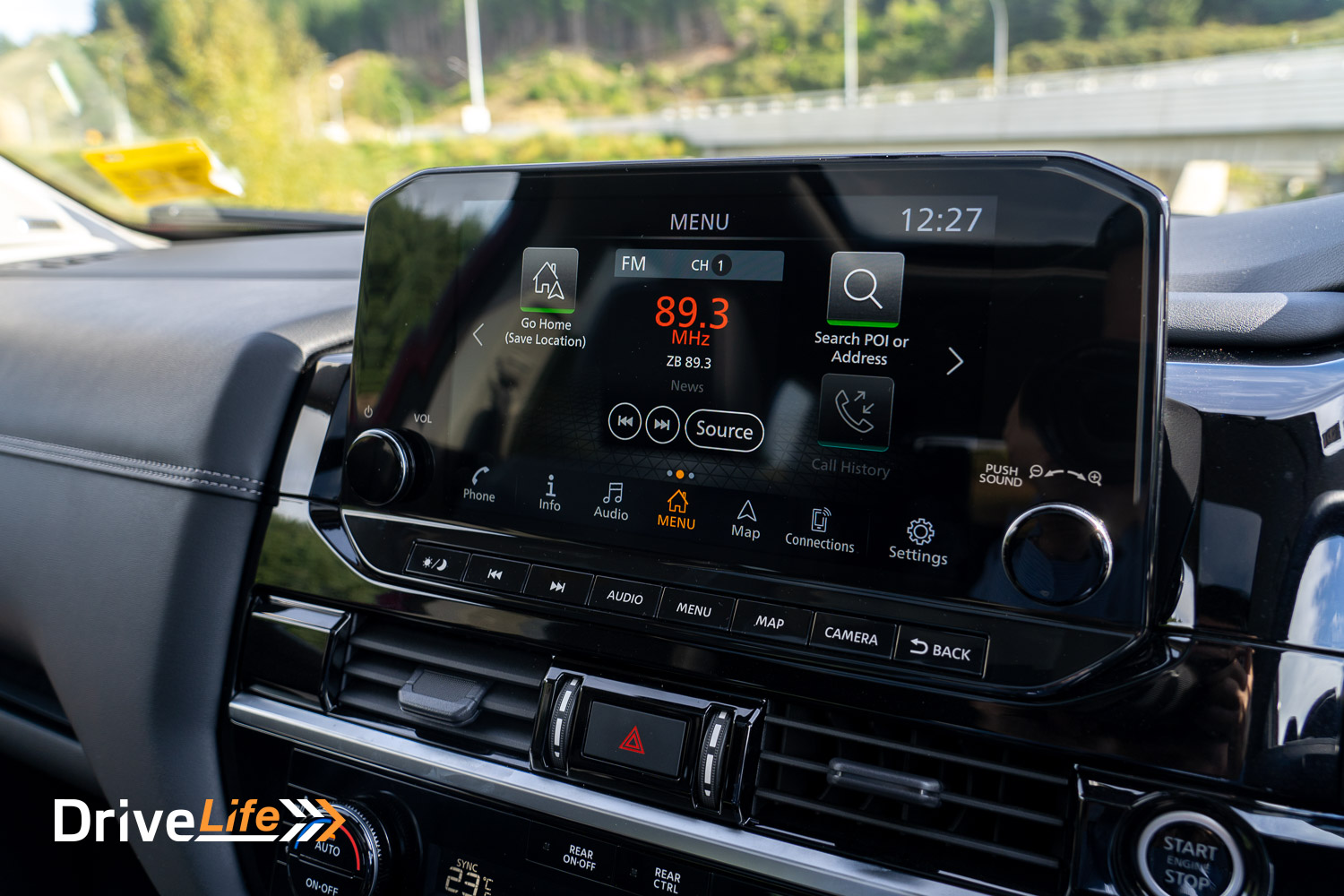
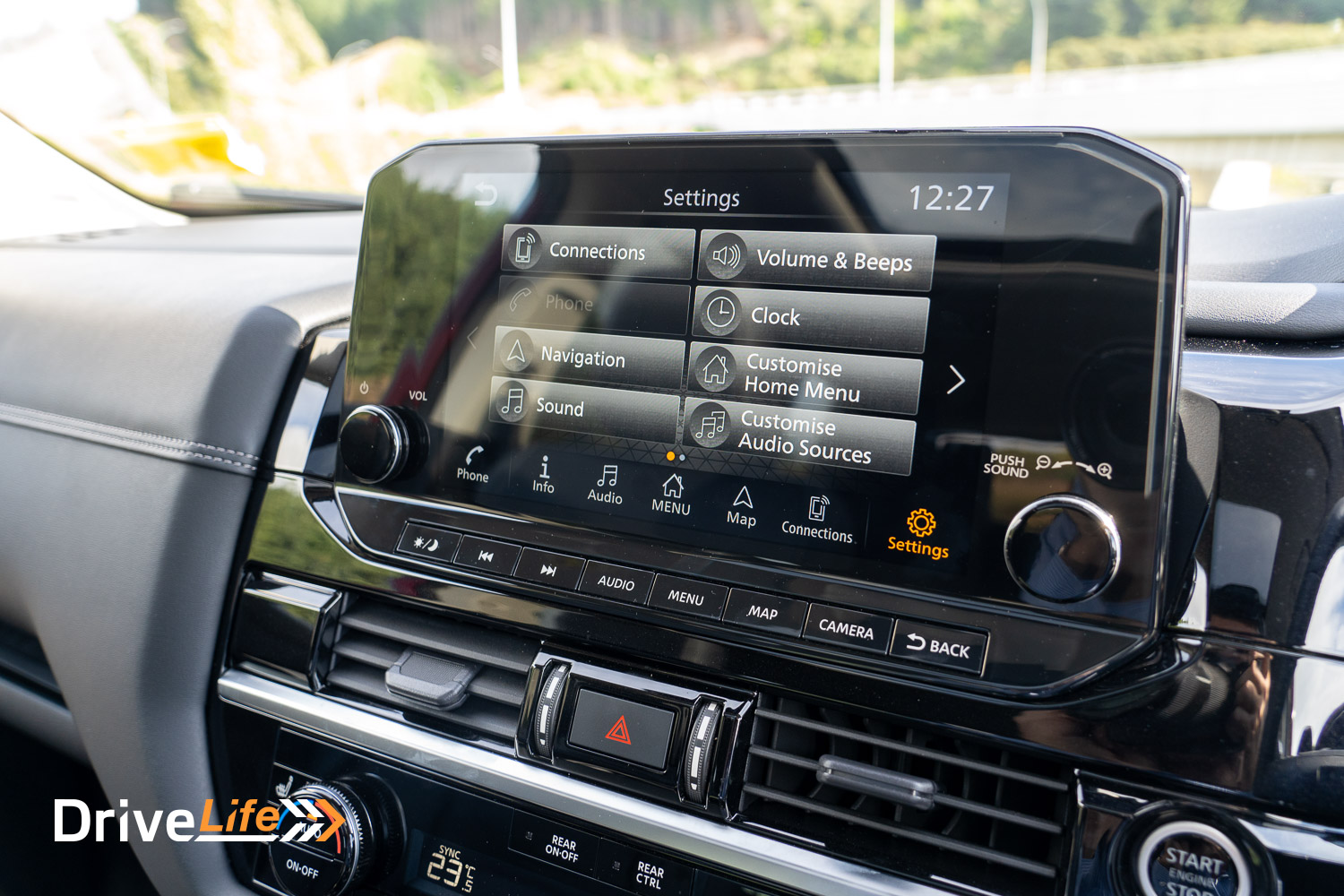
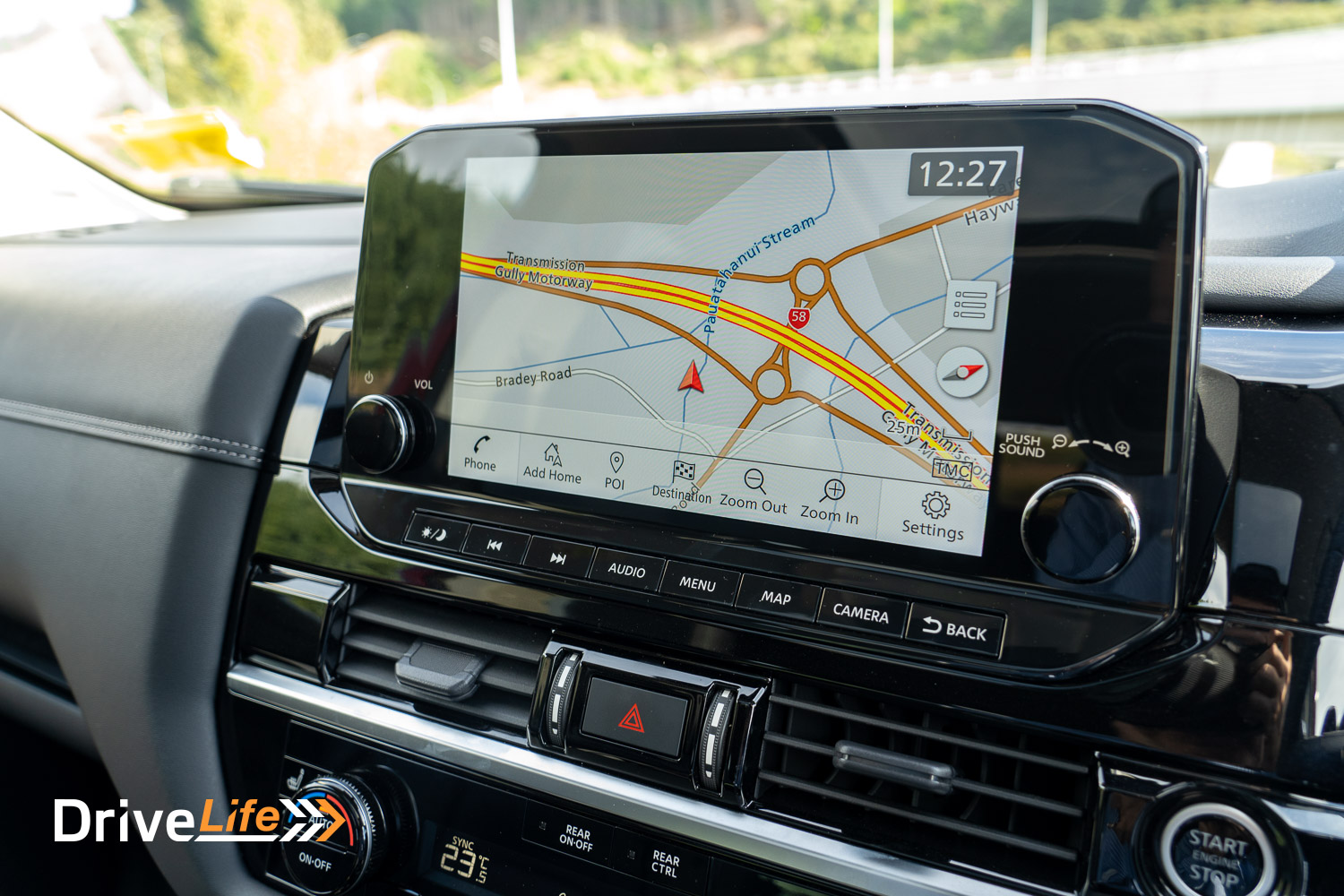
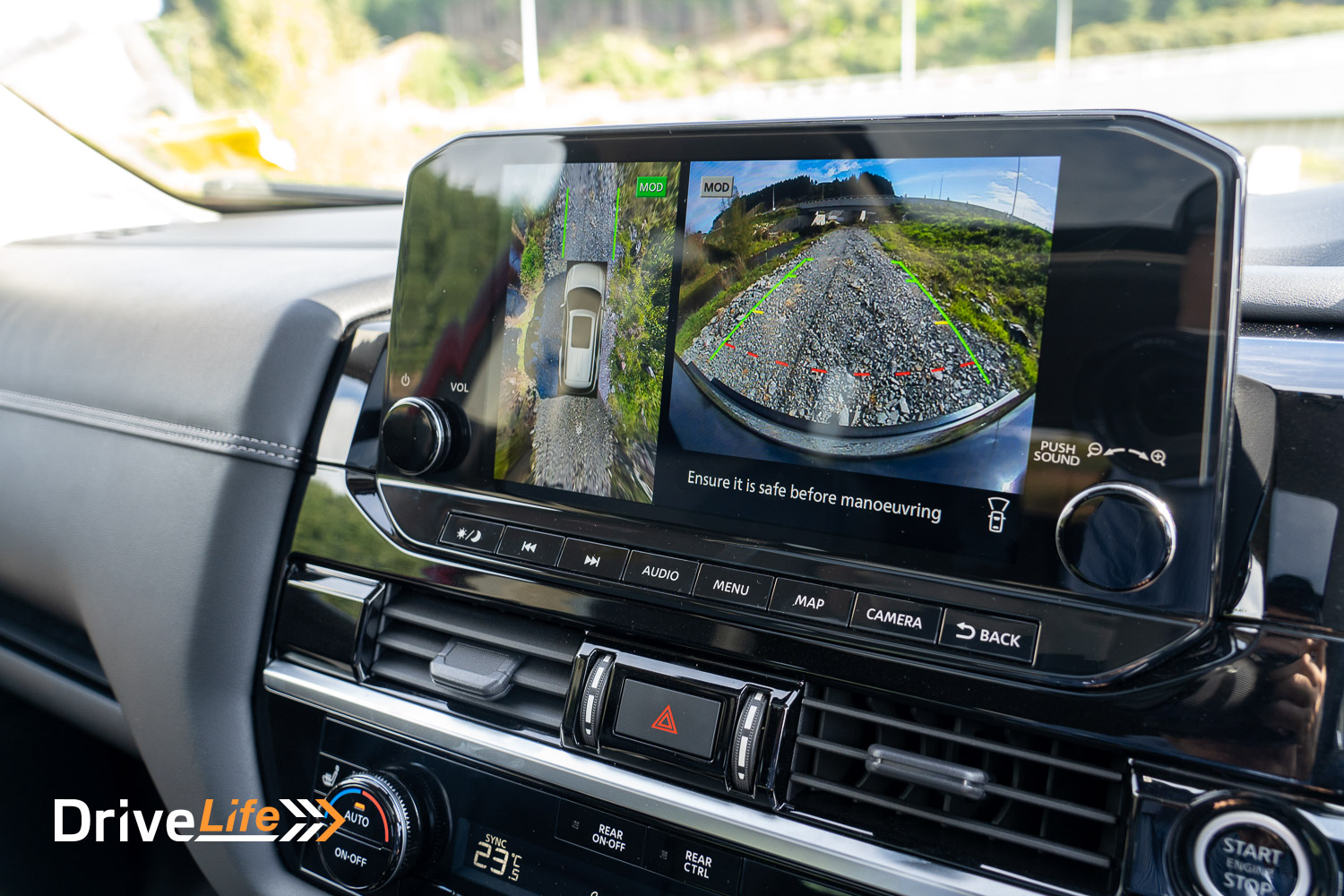
Surprisingly, even with the third row of seats up, there’s still 205 litres of space behind the back seats. With both second and third rows of seats down, the total available space isn’t massive at 782 litres, but it’s still a very usable space. Under the floor is another huge area for storage, and a plastic flap to get access to the jack and tools. The loading height is still too high, just like the previous generation.
The spare is a space-saver stored under the car.
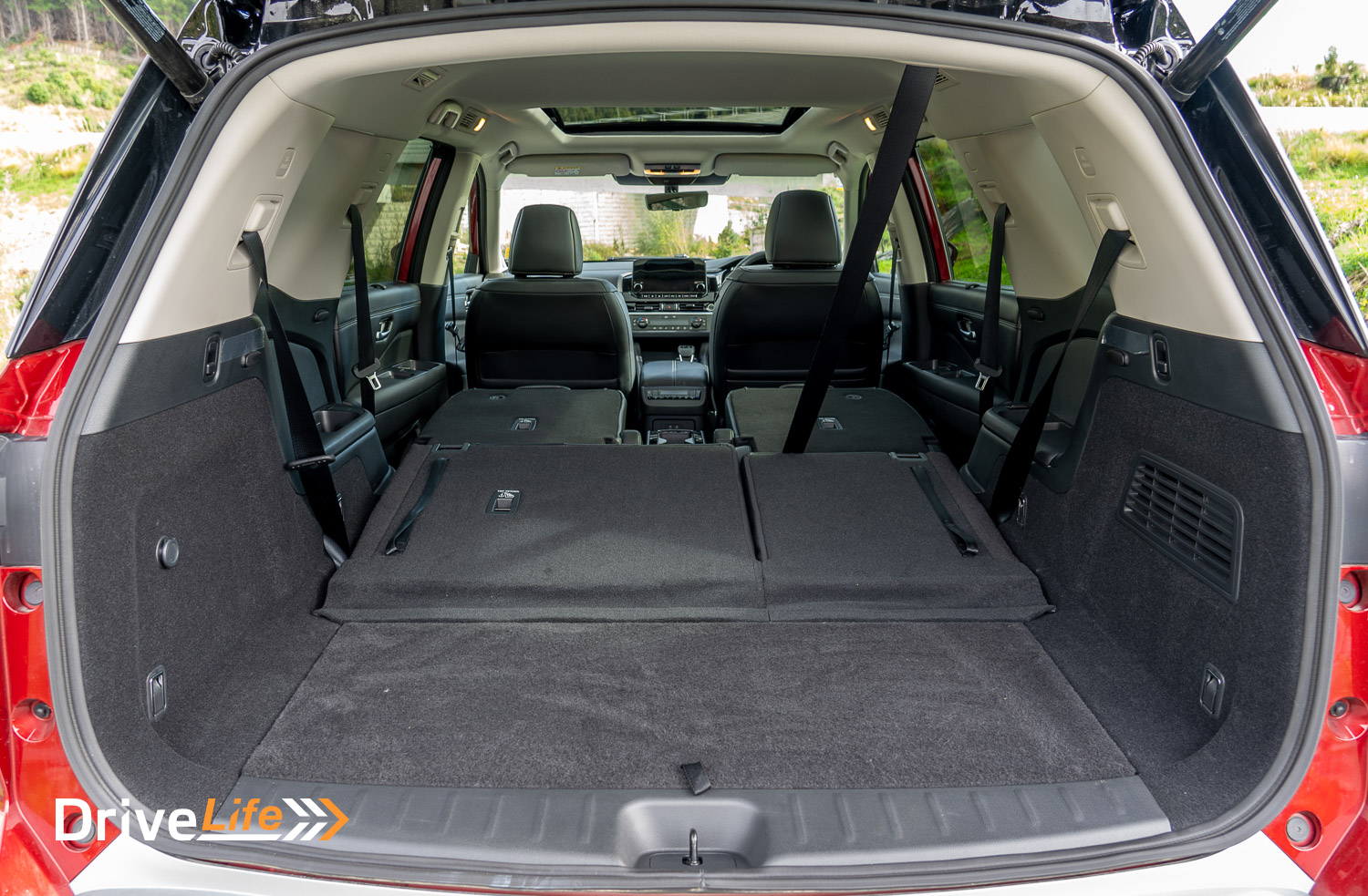
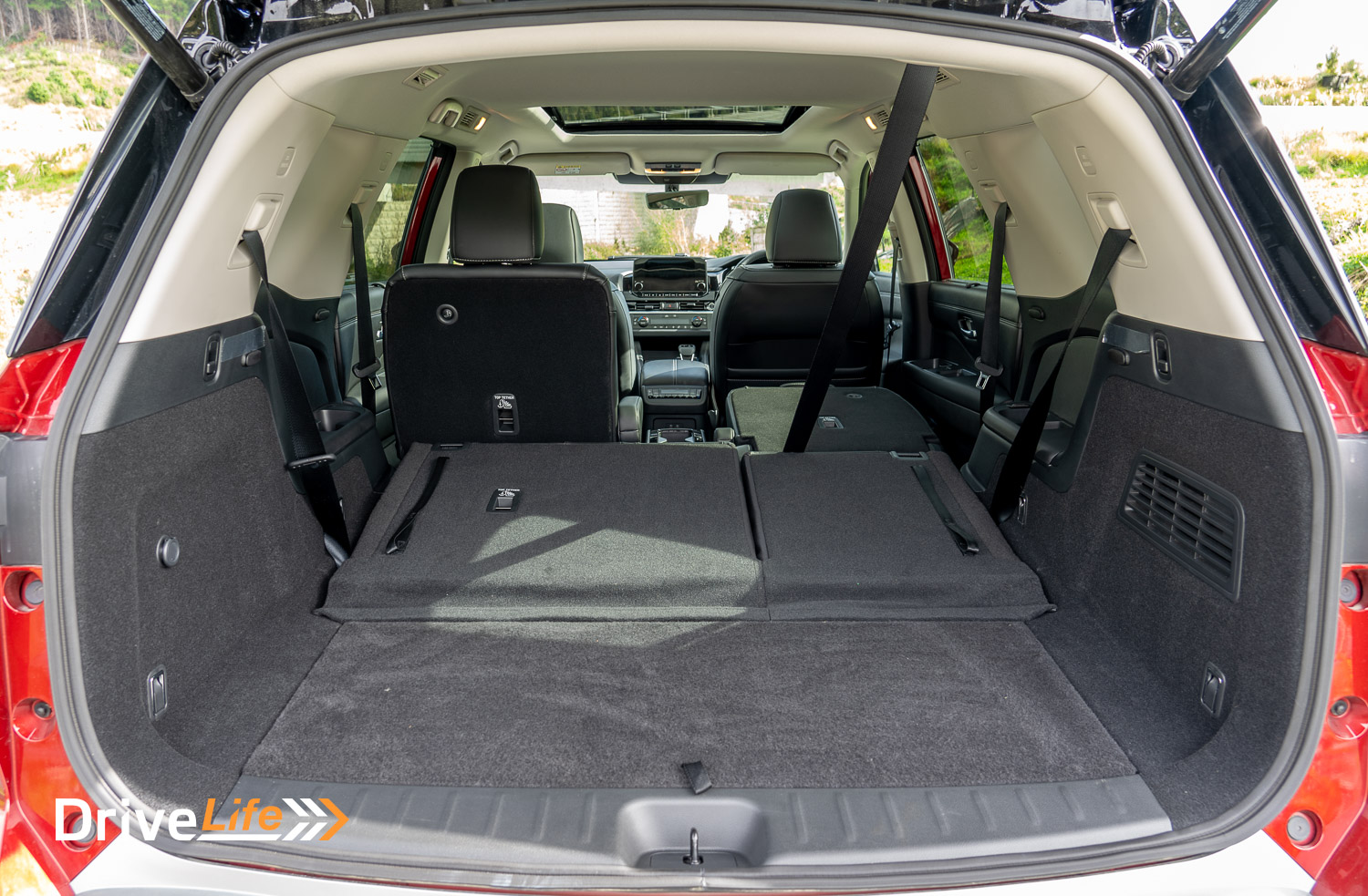
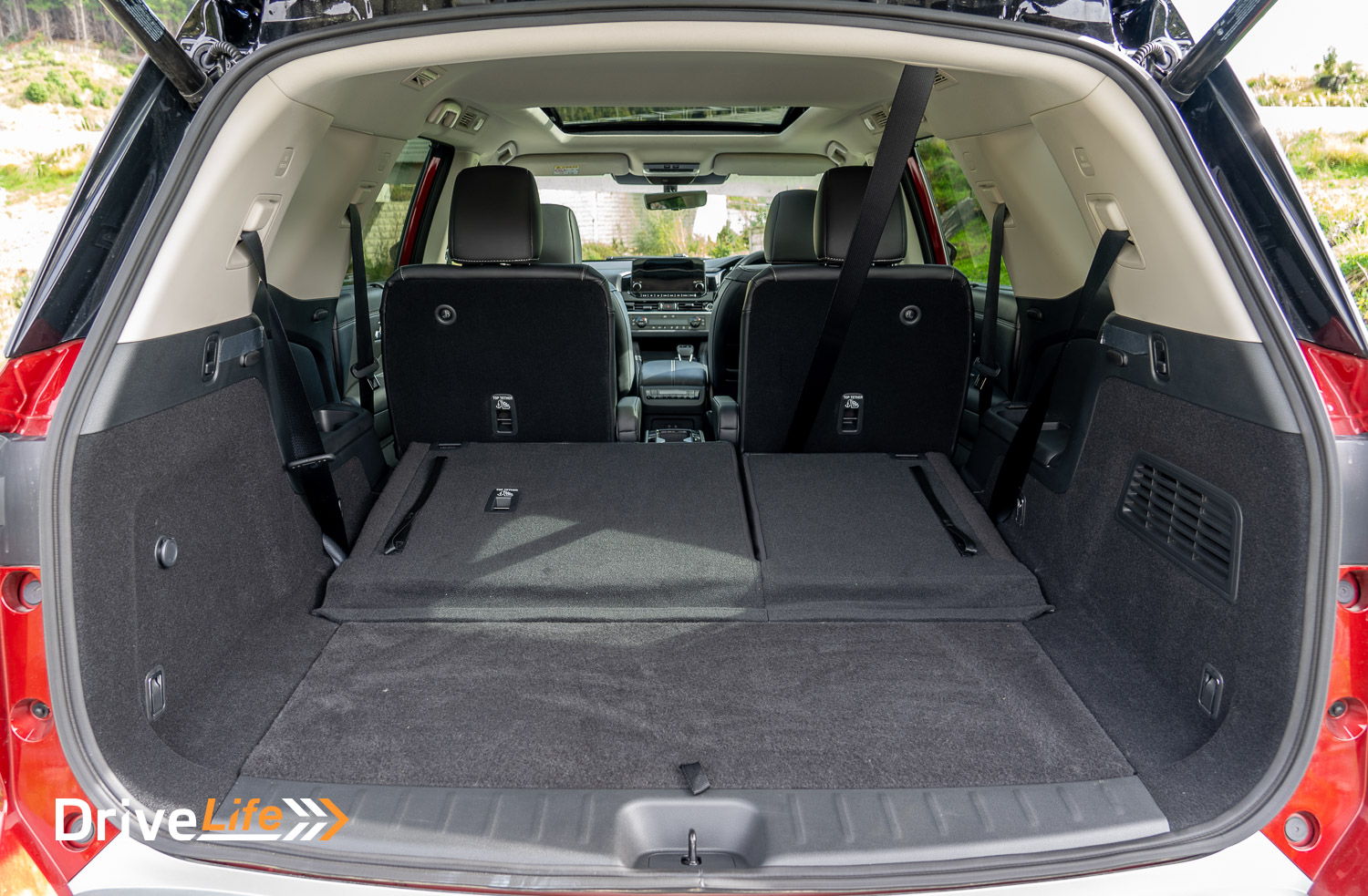
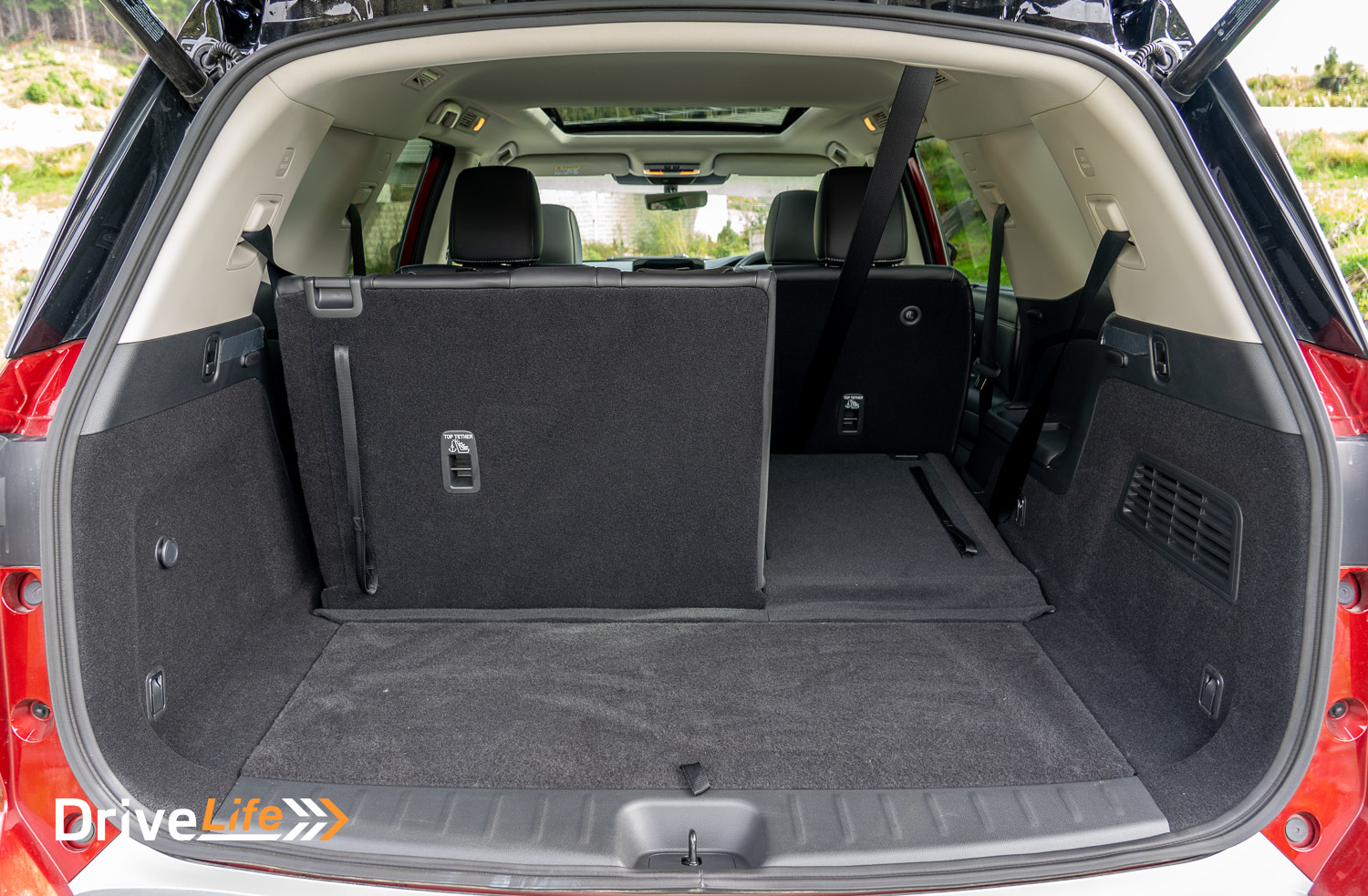
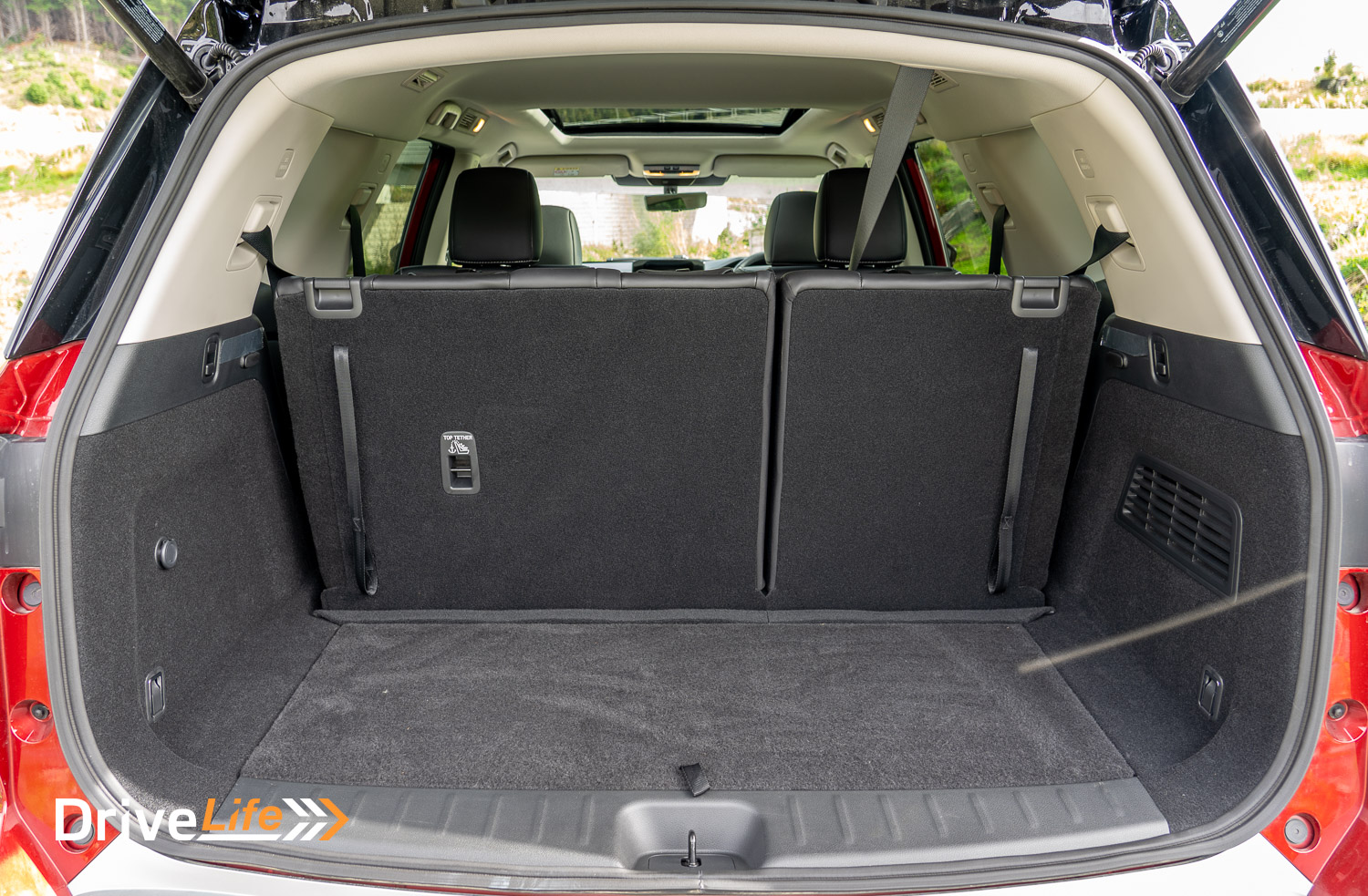
What’s The 2023 Nissan Pathfinder Ti-L Like To Drive?
Picking up the Pathfinder saw a range of 632km with a full tank of fuel. With a trip to Hawera the next weekend to work on our Project Car, I’d be spending a week commuting to the office, then off on a 600km road trip. It would be a great combination of driving and use.
On leaving the dealership, I realised it’s been far too long since I last drove something with a petrol V6. Smooth, refined, powerful. The new Pathfinder may be big, but this engine certainly seems up to the task. With only slightly less weight than the previous model but exactly the same engine, the new Pathfinder can really move it. I think this is down to that new 9-speed automatic transmission; it’s a world away from the CVT it replaced and is a superb transmission in its own right. Correct gear at the right time and quick changes. This new automatic is near-on perfect.
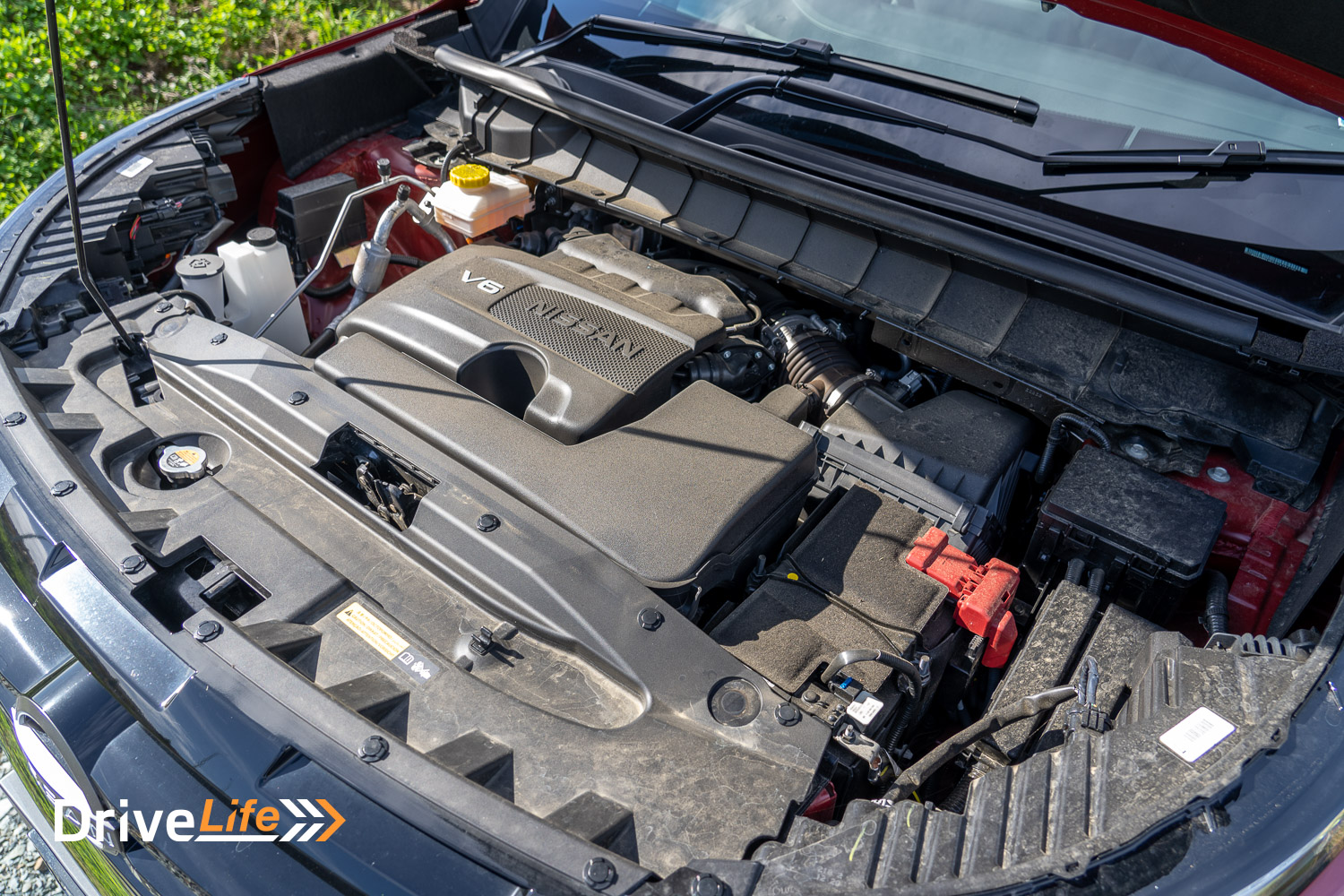
One thing that took me a little getting used to is the “Intelligent Rearview Mirror” in the top-spec model. I last saw this in the Nissan Leaf, and Alastair had it in the Nissan Patrol. It’s essentially a screen to see what’s happening out the back of the car, instead of a mirror. I struggled with getting used to it in the Leaf, but this time committed myself to only using the digital mirror. If you want to, you can flip a lever and the screen will revert to a mirror.
However, that means all you can see are headrests and a small back window. Using the digital mirror allows a full-width view of what’s happening to the rear of your Pathfinder. Not only that, but it’s not really affected by rain (although using the rear window wiper will clear it) and at night it’s also very clear. By the end of my week and 1,000km of using that digital mirror, I was sold on it.
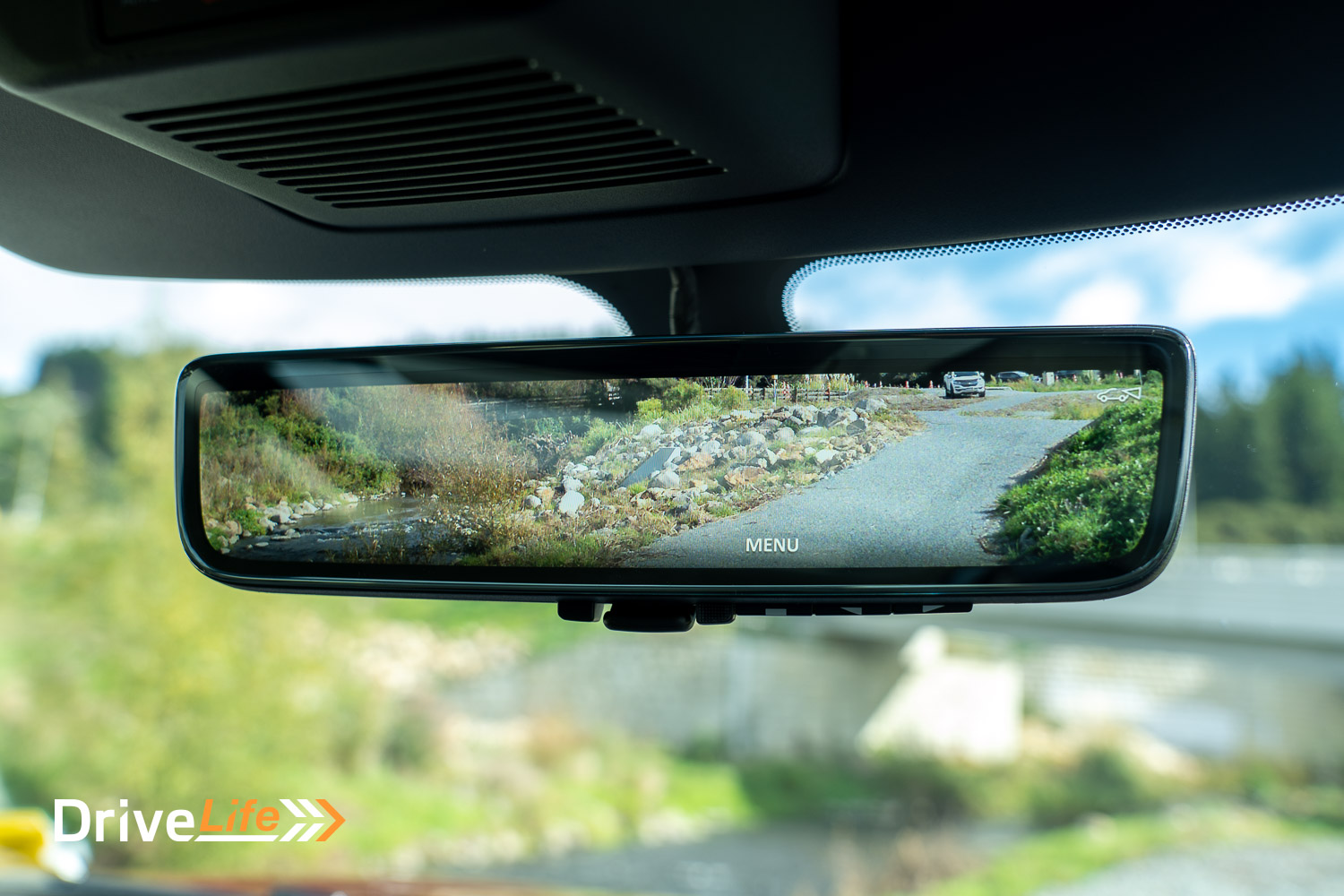
There are other benefits too; since it’s a screen, you can angle the mirror towards you and the image stays the same. It feels wrong to start with, but then makes sense. You can only adjust the angle of the mirror using the simple built-in menu, and this also allows you to adjust the brightness, language, angle up/down, left/right, rotation, and turning auto-dimming on or off. It’s a superb addition to the Pathfinder. It can be affected by reflections sometimes, but closing the electric roof blind helps minimise this.
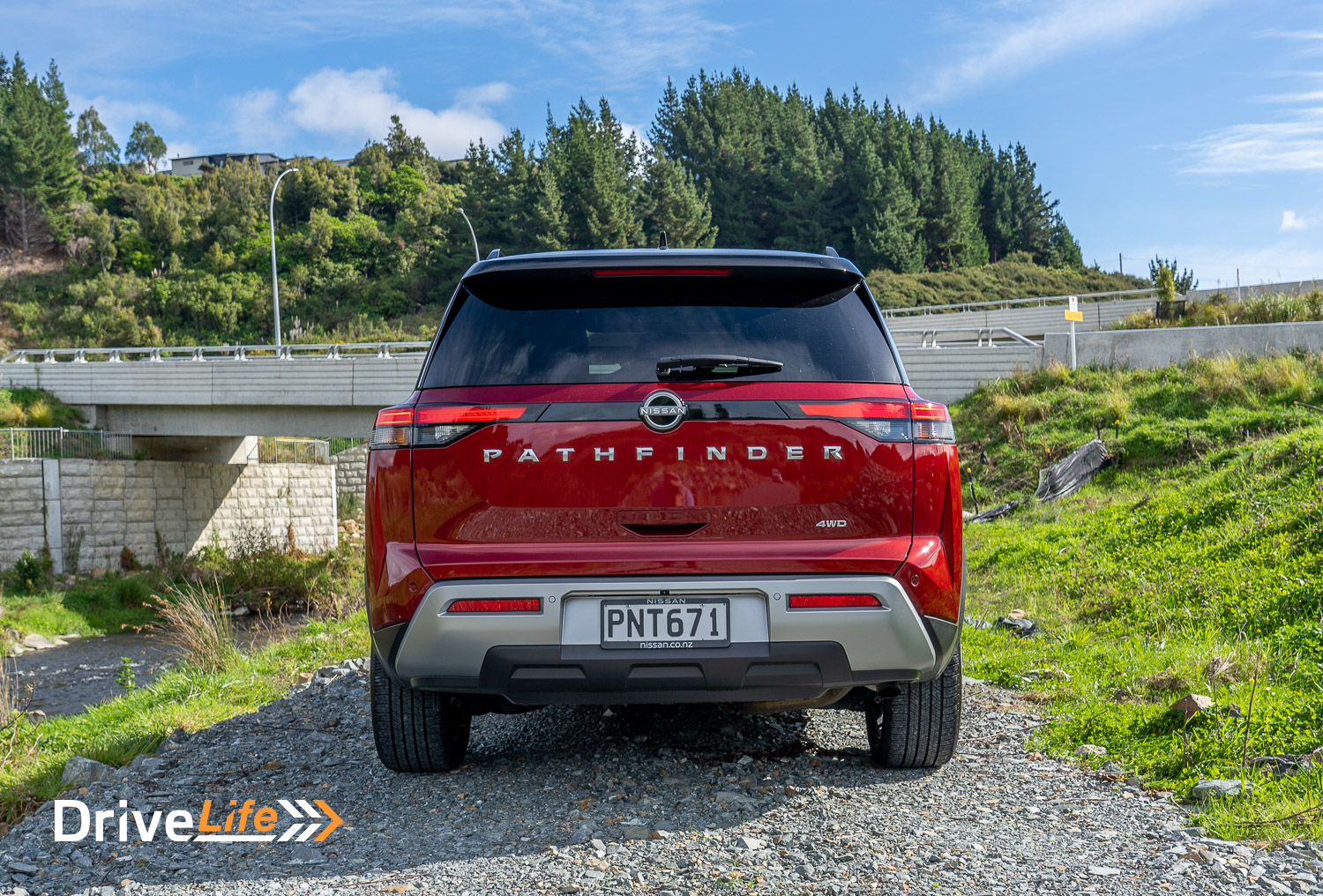
That mirror really helps in commuting, as do the huge side windows on this car; visibility is not an issue, and there’s always blind spot monitoring to help, as well as a 360-degree camera. As a commuter, the Pathfinder also has great visibility due to its height, but it is a big wagon, and around Wellington’s narrow streets it often felt a bit cumbersome.
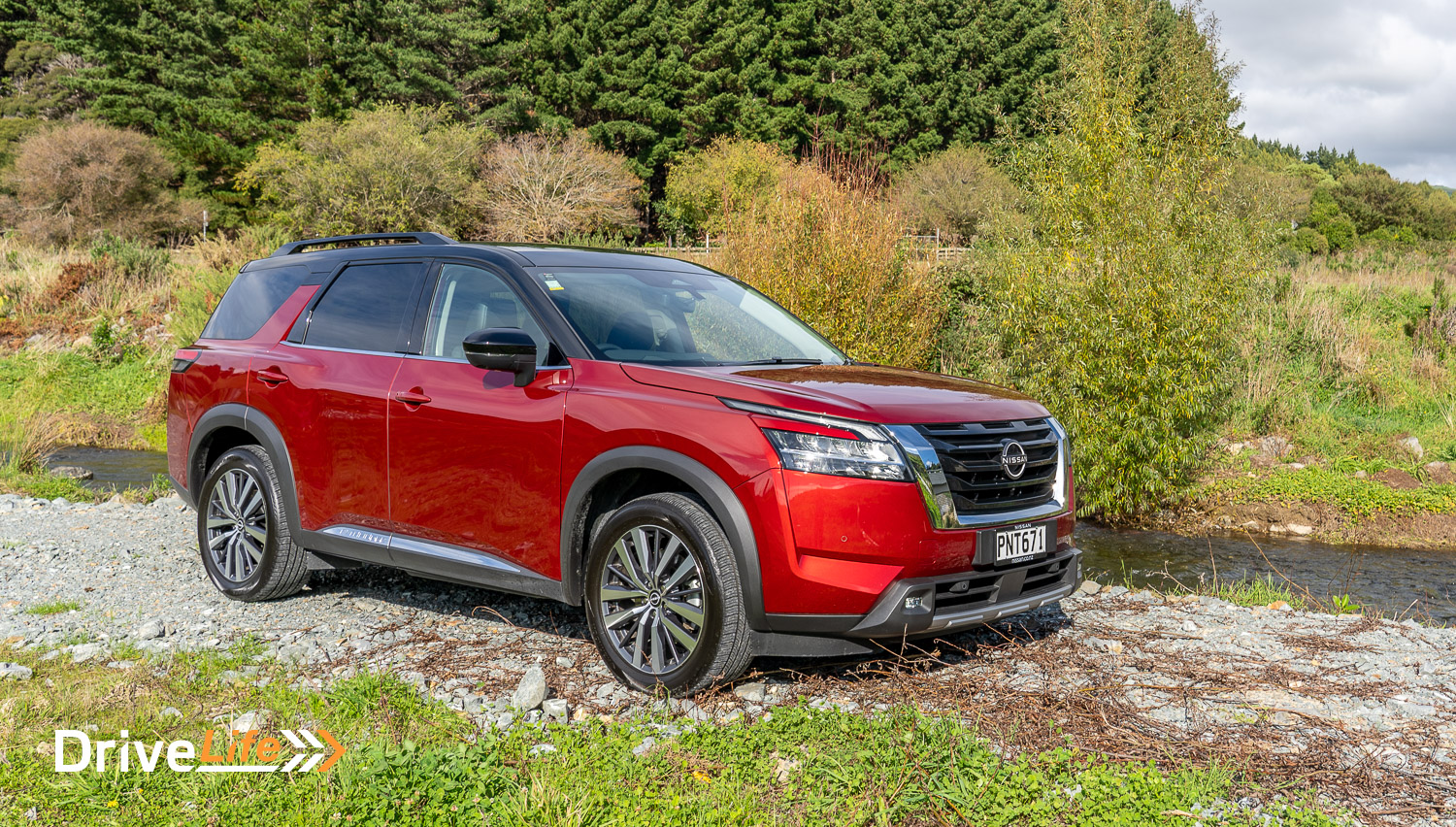
On the motorway, Nissan’s adaptive cruise control works very well, being smooth and predictable. It will bring the car to a complete stop if needed (and oh, it’s needed on Wellington’s motorways) but like the Subaru Outback XT we recently reviewed, the Pathfinder will beep quite a lot. For example, when someone enters your lane, beep. Car in front exits your lane? Beep. It’s not as bad as the Outback, but it can get irritating and I couldn’t turn the beeping off. On the plus side of things, the Pathfinder will recognise speed limit changes quite well and if you want to, pushing the ‘set’ button will drop cruise control speed down to the new limit (if it’s lower) and pressing ‘resume’ will set it to the new speed (if it’s higher).
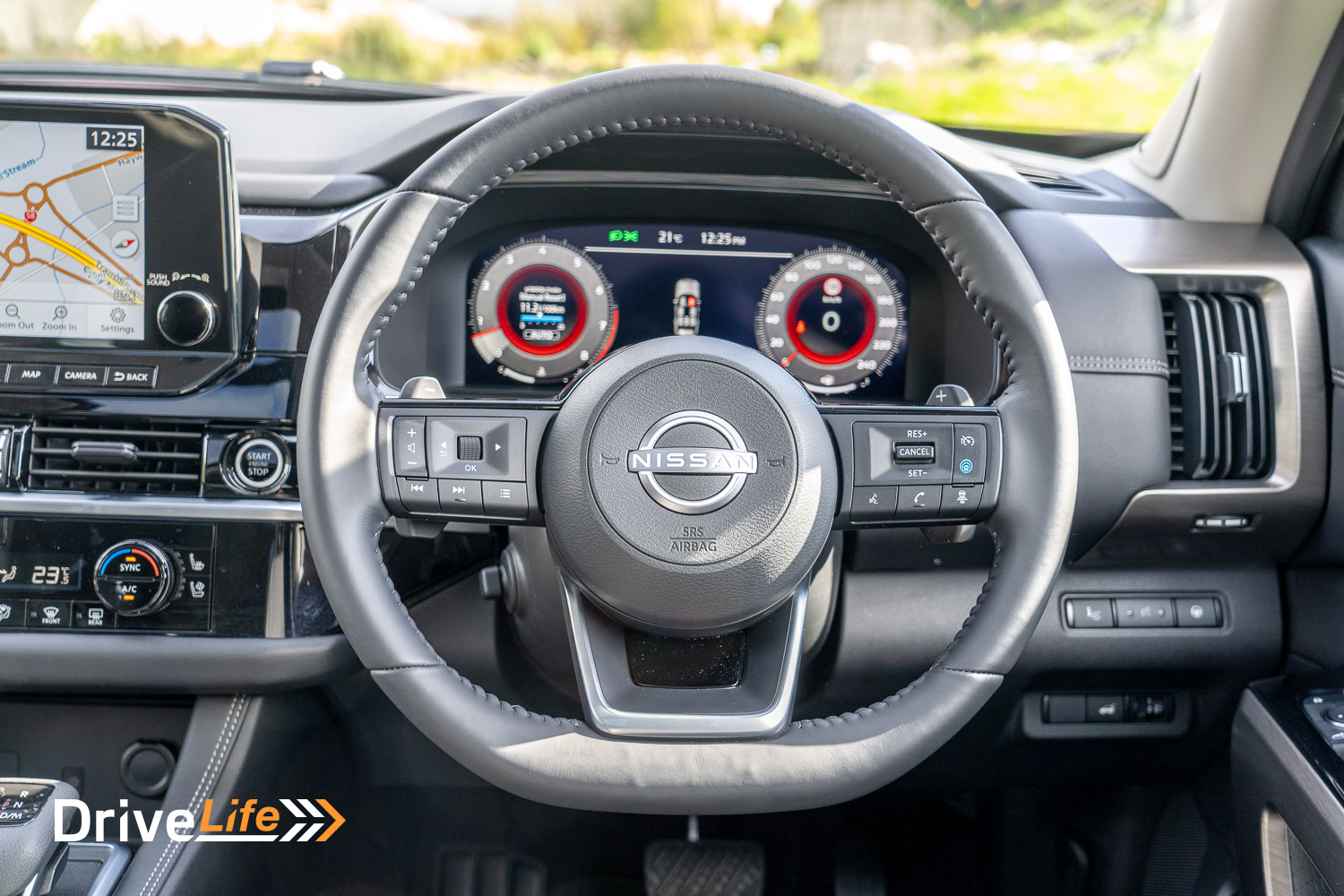
My first 45km of commuting in the Pathfinder Ti-L saw fuel consumption of 10.3L/100km, better than the 11.7 that Nissan claims. The rest of that week was spent commuting, most of the time in Eco mode. With 340Nm of torque, the Pathfinder copes very easily in Eco mode, which switches the car to front-wheel drive. A shame the car doesn’t remember the drive mode when you start it again, as it would be nice to just leave it in Eco until you needed another mode. Flicking the Drive Mode knob to the right will get you to Eco mode, then Sport, then Tow Mode (a new mode for the Pathfinder). Flicking the Drive Mode knob to the left gets you into the offroad modes; Snow, Sand, Mud/Ruts. There is a button in the middle of the Drive Mode knob to engage Hill Descent Control.
After the week’s commuting, it was time to head away for the weekend to work on our project car, giving me plenty of time to get some miles on the Pathfinder. The new model now has a digital dashboard with digital but analogue-looking speedo and rev counter. The gauges are very clear and easy to read, although there is no 50km/h marking. It doesn’t need that anyway, with the heads-up display (HUD) giving you a constant read out. Between the rev counter and speedo is a driver’s information display, giving you access to 7 options of pages and within some of those pages, you can then flick up or down for other pages. There’s plenty there to keep you entertained on a long trip. While it is a digital dash, you don’t get any customisation options.
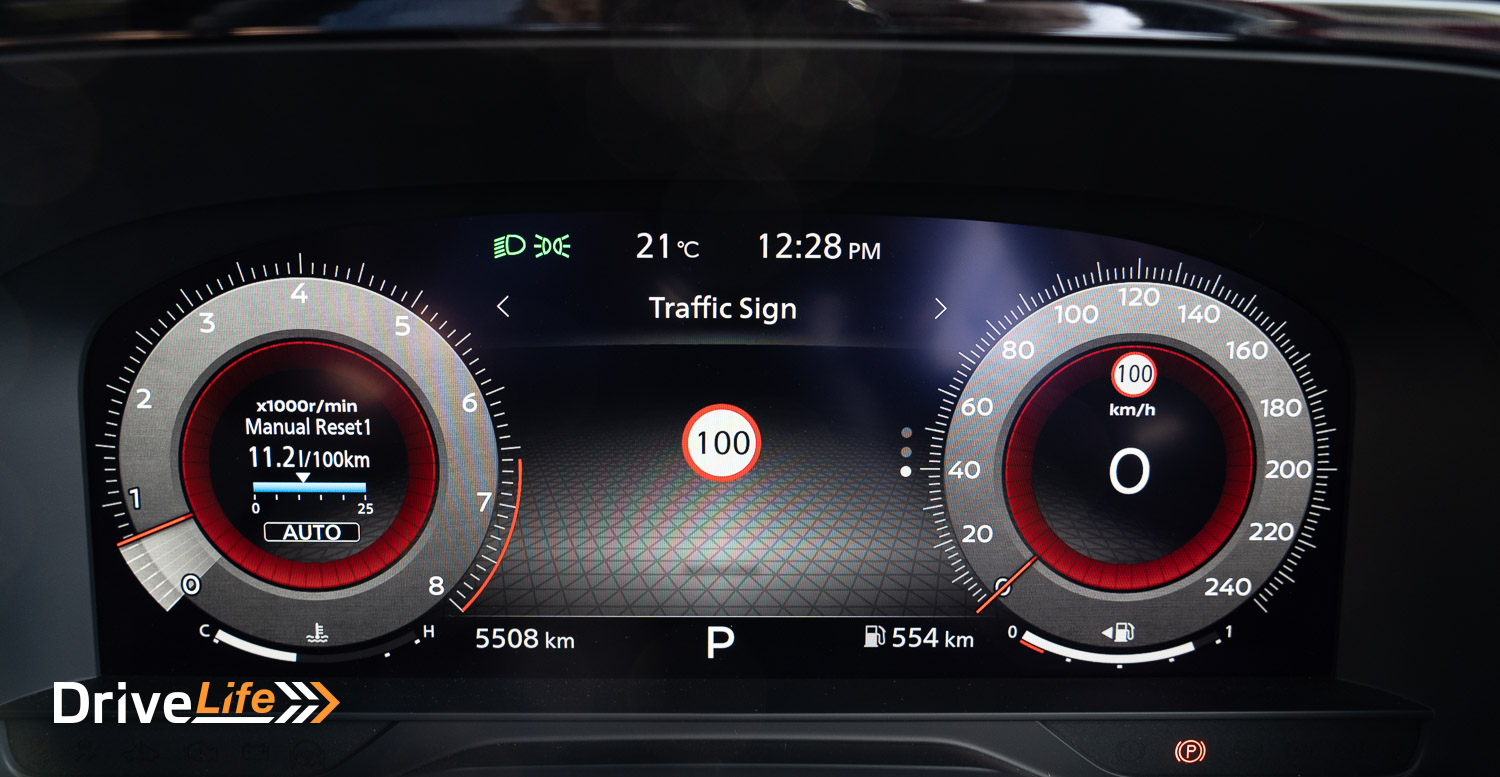
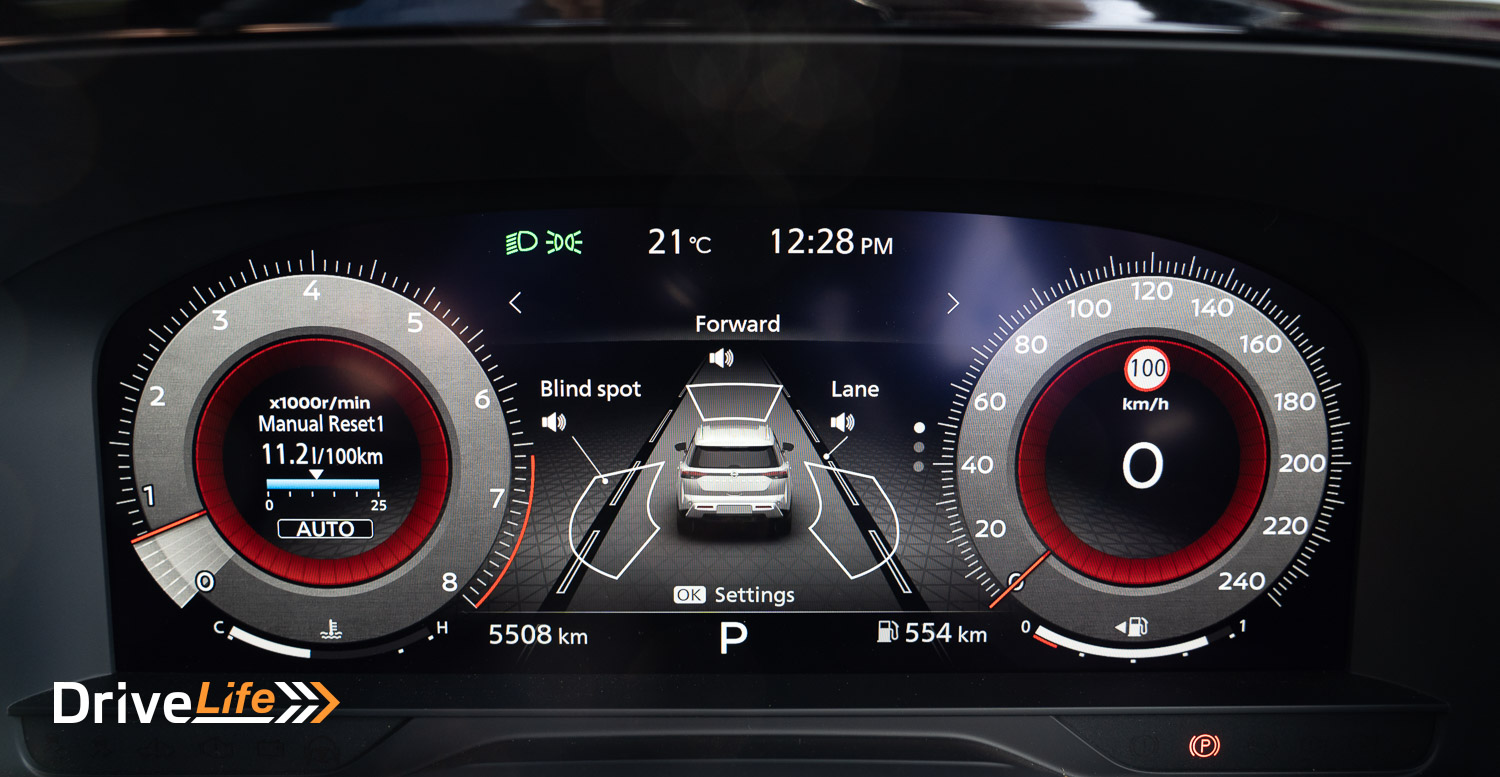
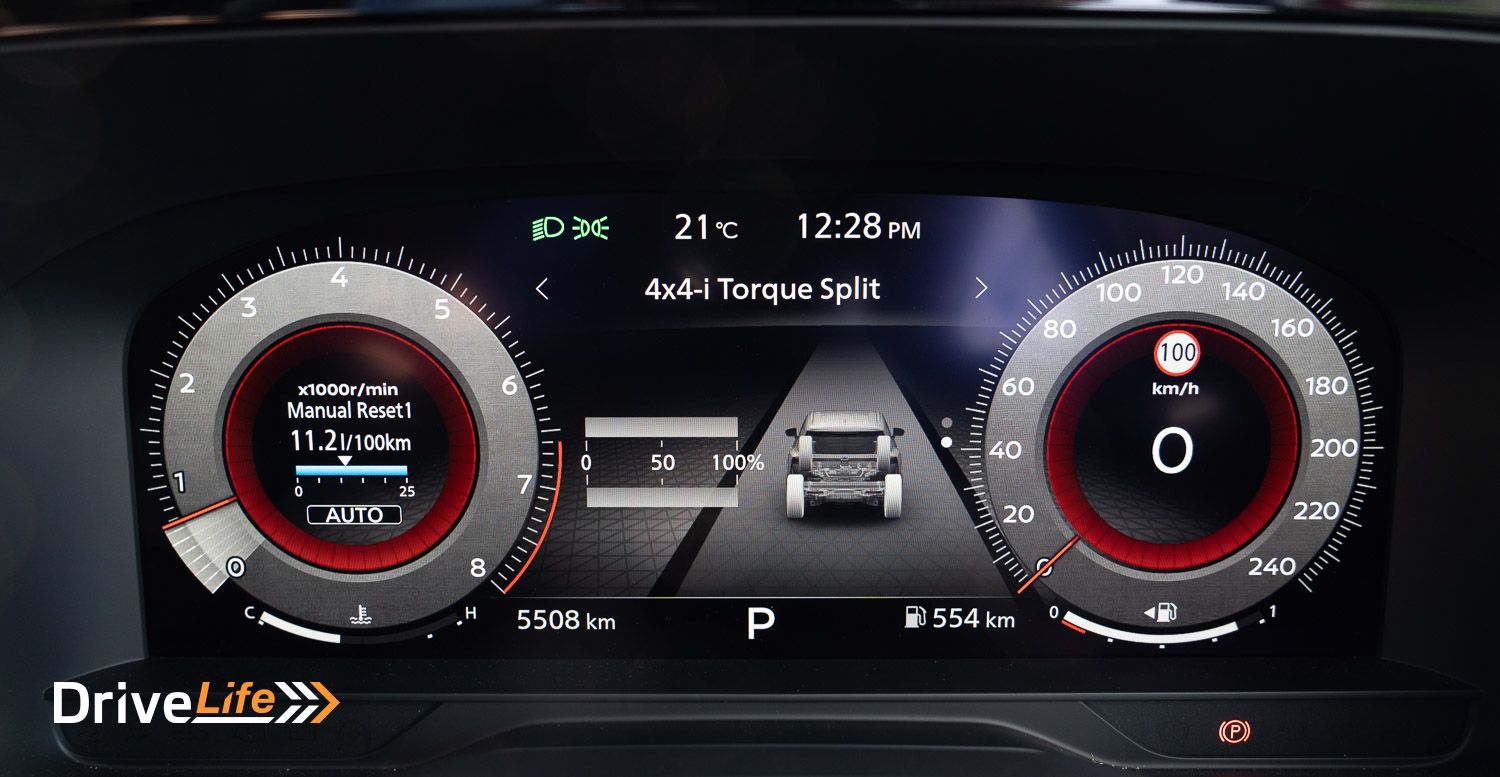
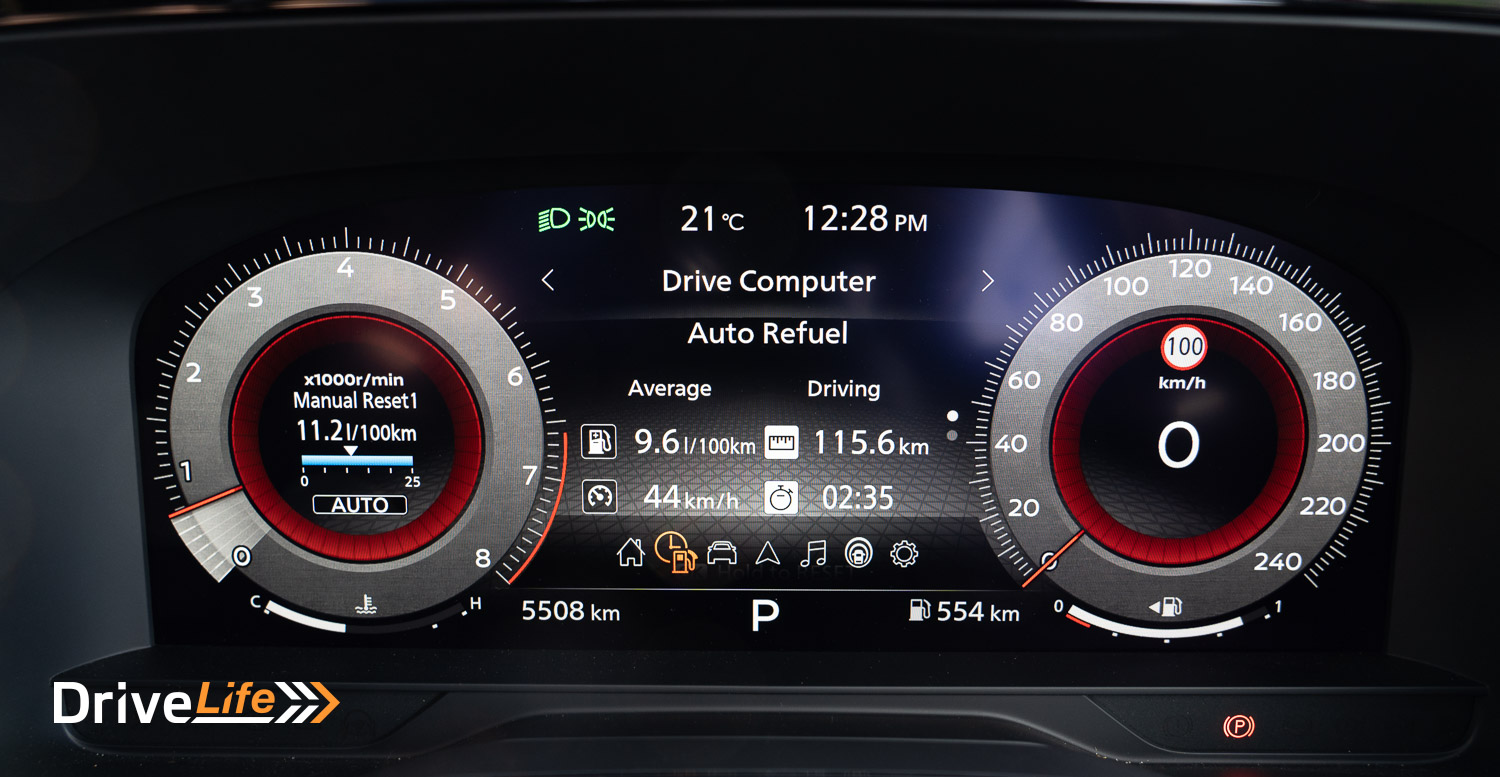
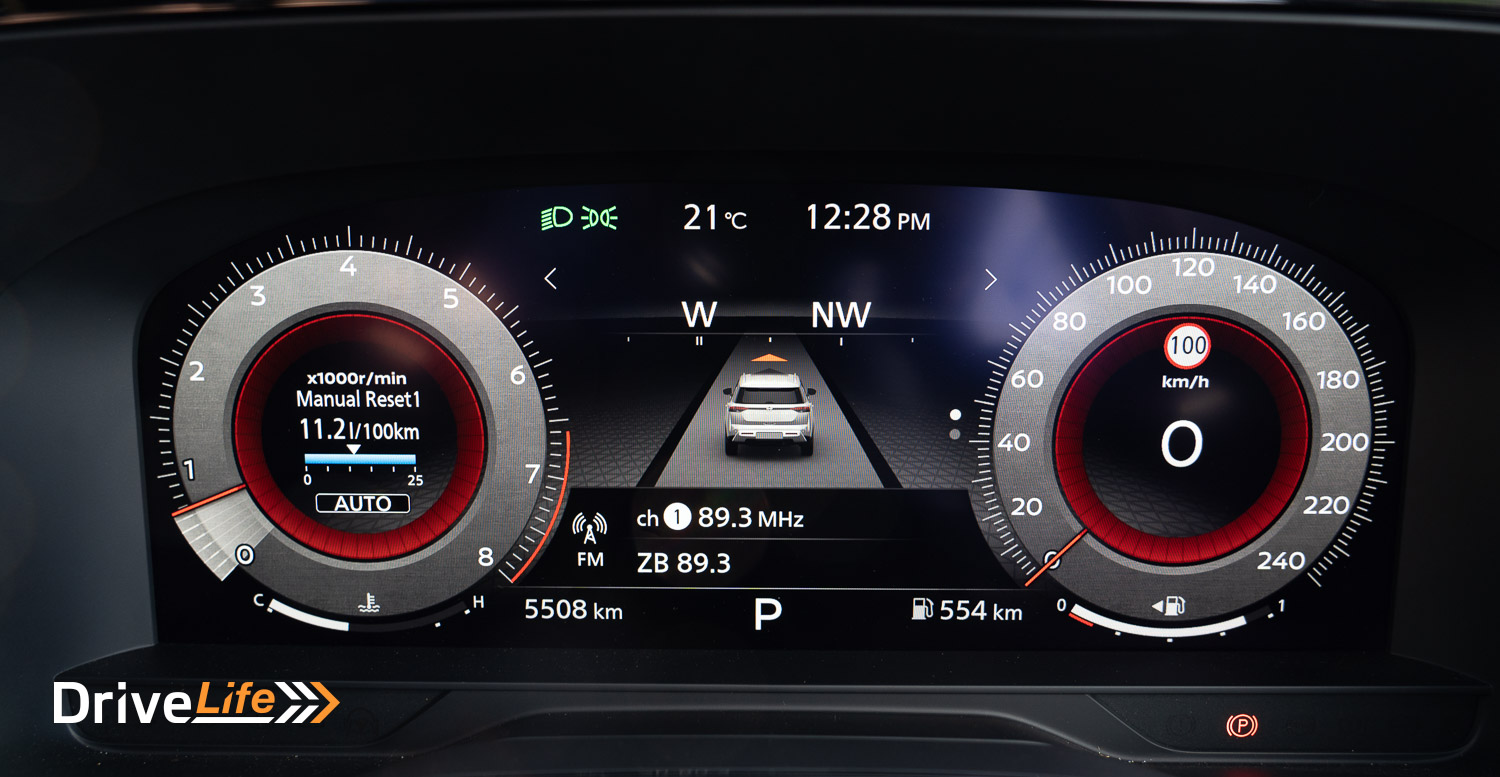
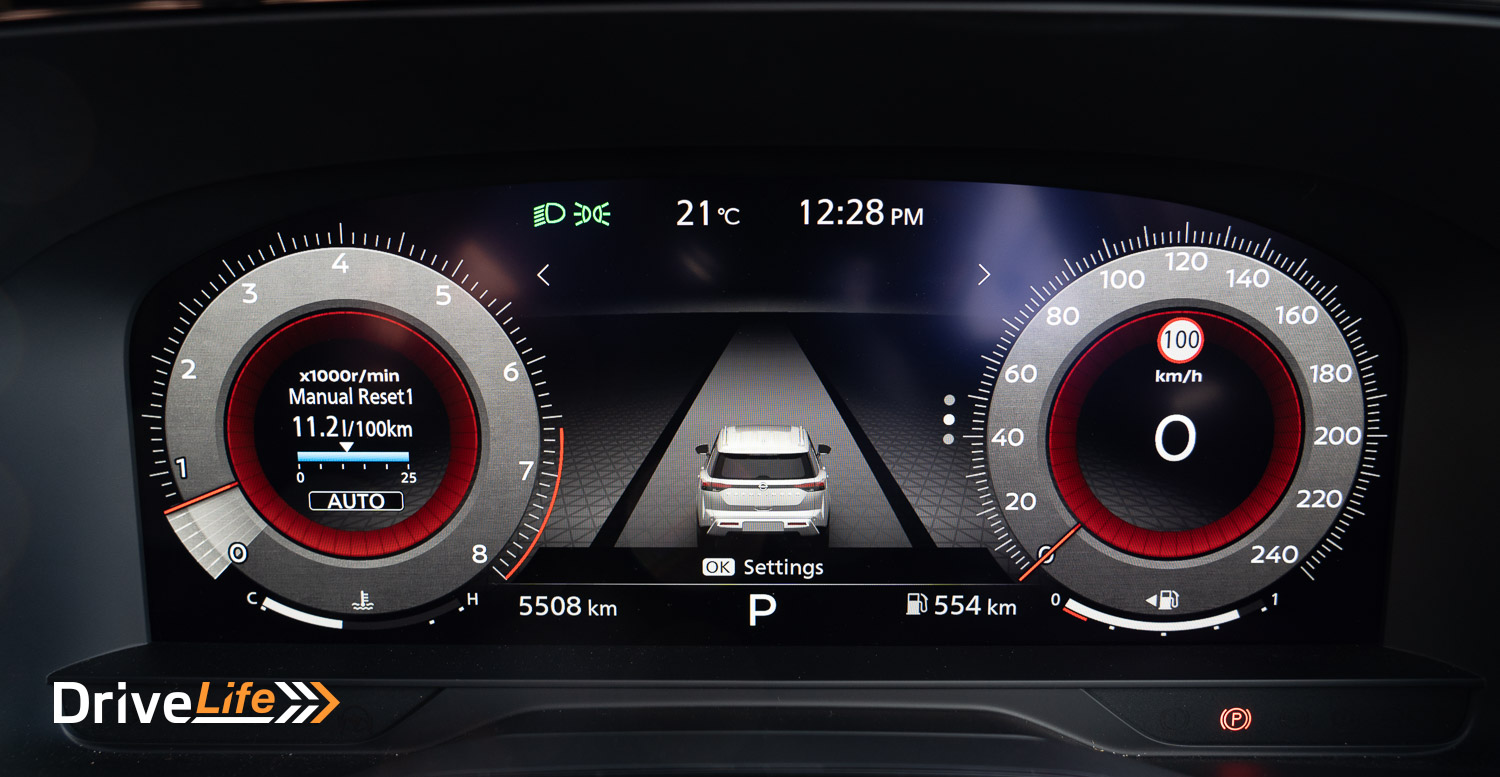
That HUD also shows you the current speed limit, SatNav directions, audio track/station selection and cruise control settings. It’s one of the better HUDs out there and has all the information you need right there on the windscreen.
The Pathfinder’s infotainment system has good speed and resolution. While the car has Apple CarPlay and Android Auto capability, the inbuilt infotainment system is good enough on its own.
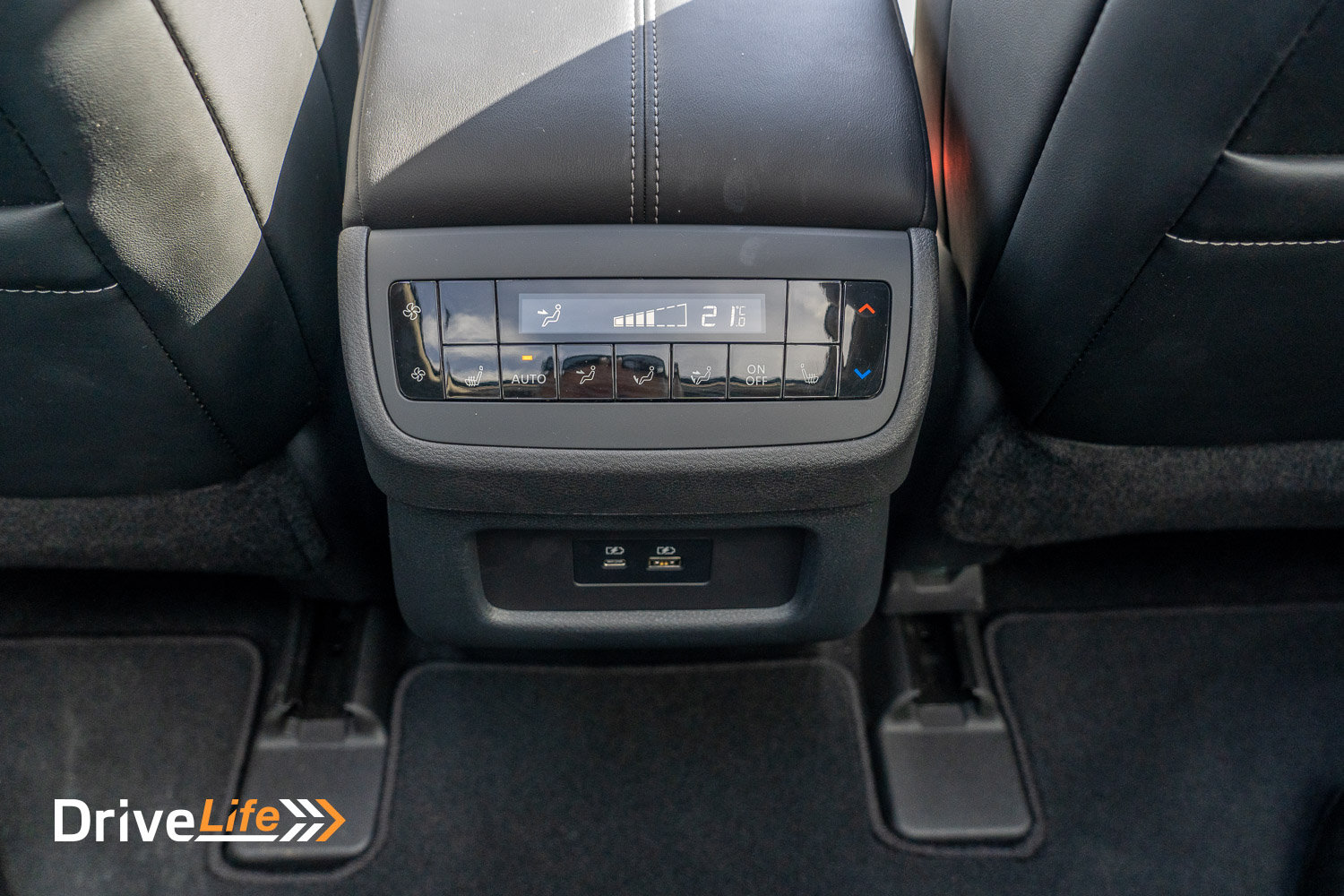
On the not-so-good front is Nissan’s Pro-PILOT. This helps steer the car, keeping it in its lane to reduce driver fatigue. It’s a pretty common feature in most cars now, although every car company seems to call it something different. While on the whole, Pathfinder’s self-steering system is ok, I couldn’t rely on it. Too many times it didn’t know what to do and would start weaving in its lane, left to right. Not badly, but obviously wasn’t sure exactly where to steer the car. Of course, you should keep your hands on the wheel at all times, even when using Pro-PILOT, but I ended up fighting against it too often, so turned it off. A good first attempt, but more work is needed here.
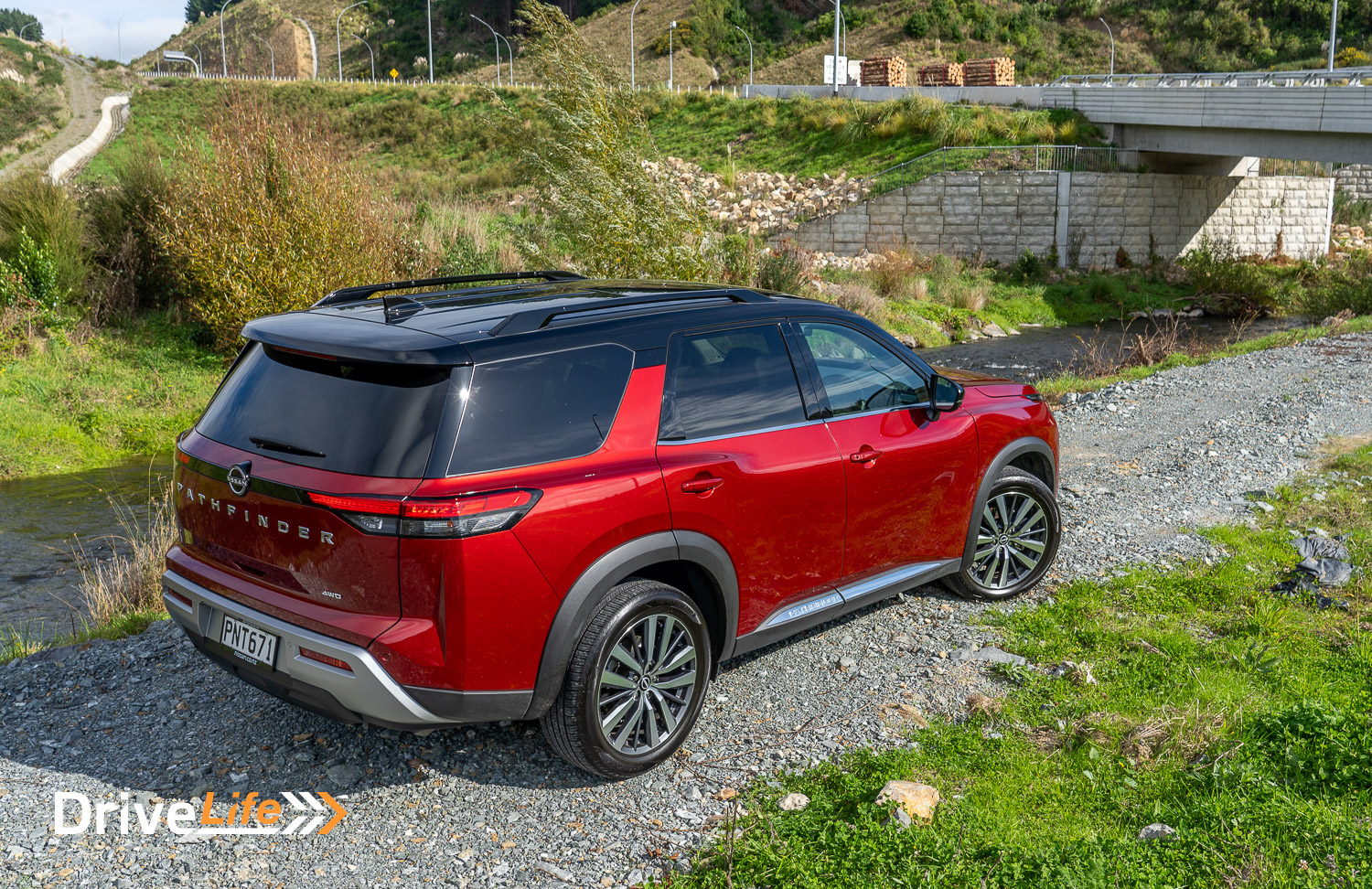
The actual steering wheel is great; it’s the perfect size and thickness and feels excellent, It weighs up nicely at speed but is nicely light around town.
On the open road, that V6 purrs along, barely audible. Switching into Sport mode will see better performance, but honestly, it’s not needed as there’s plenty of performance in any mode. Maximum torque is at a high 4,800rpm so you’ll need to rev it out for the quickest and safest passing manoeuvres. Past that maximum torque figure, the engine takes on a little growl that only a petrol V6 can deliver; it’s very nice indeed.
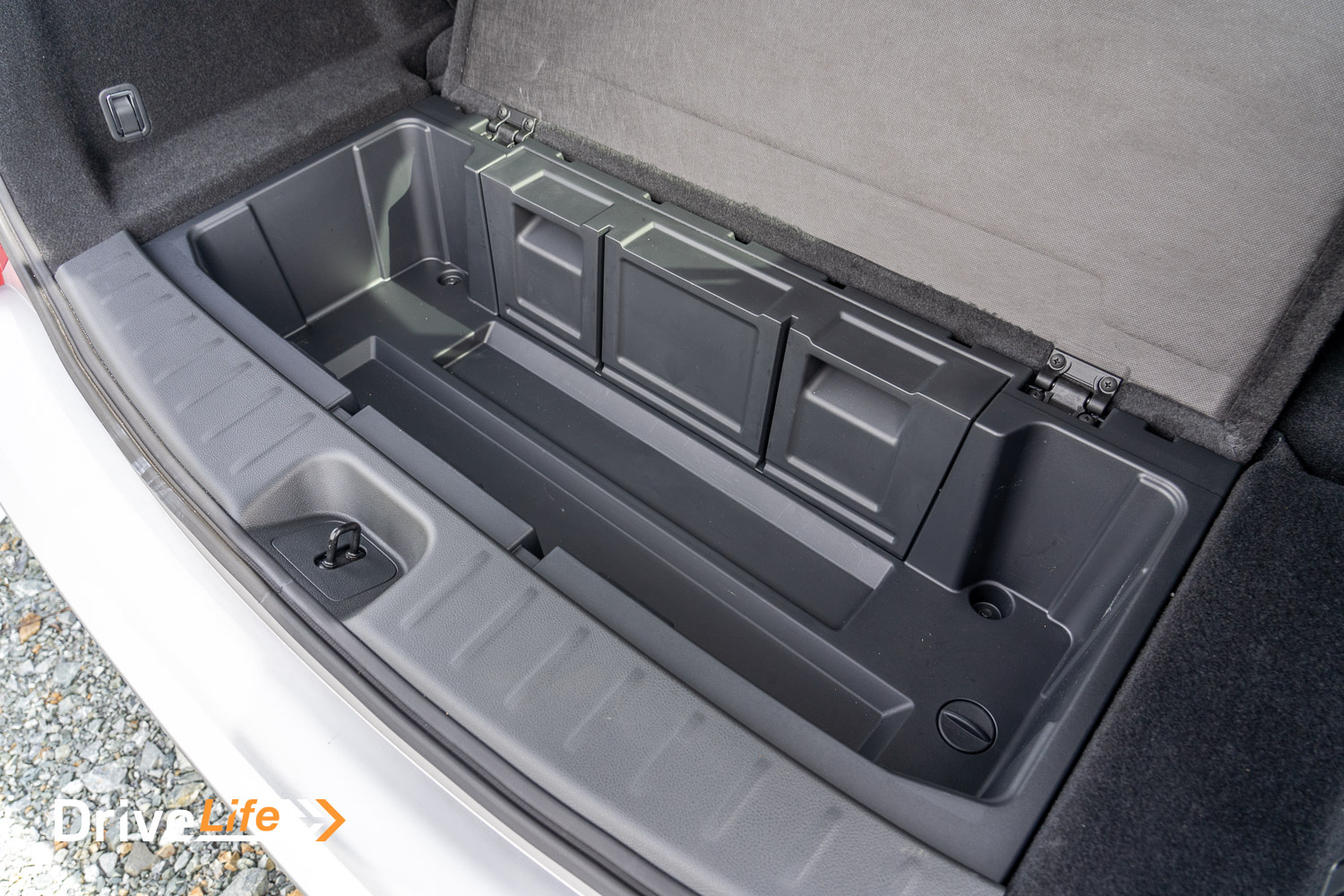
From a stop in the wet and in Sport mode, full-throttle acceleration will see a little wheelspin, and then electronics will kick in and get some grip happening. It’s not dramatic at all, and that’s a good thing. In this regard, the Pathfinder is a pretty safe drive. With almost torrential rain, I did find the weight and height of the car a bit of a handful on the few twisty bits of road from Bulls to Hawera. There were a few times I felt I was travelling too quickly, so eased off the gas. In Auto drive mode, the Pathfinder will allocate traction front/rear as it sees fit, but even then it’s still a 2-ton car with a high centre of gravity. Take it easy on the corners.
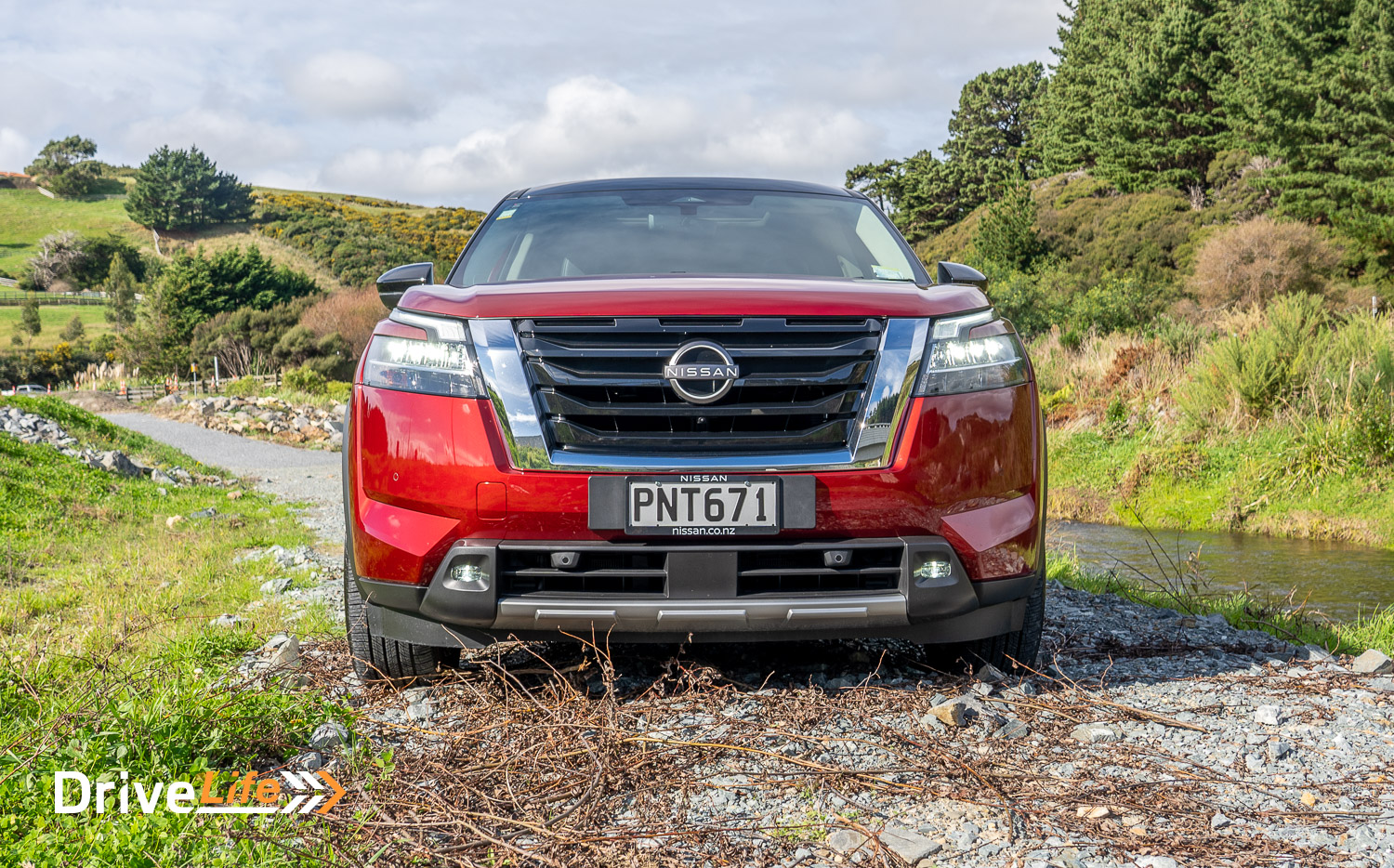
I did hammer adaptive cruise control on the way to Hawera and found that the Nissan’s speedo reads fast by 7km/h – in our test car, at least. We often get a difference between indicated and actual speed, but 7km/h seemed very high. Not the end of the world but something to keep in mind.
After the weekend in Hawera, I headed back 300km to Wellington. I accidentally reset the trip meter before leaving the township, and so instead checked my overall L/100km figure on a 300km straight drive home. Impressively and surprisingly, the V6 Pathfinder returned 8.7L/100km – that’s an excellent figure for such a heavy V6 petrol-powered SUV. In the end, after driving the car over 1,000km, our total figure was 9.4L/100km. While 600km of that drive was on the open road, it’s still an excellent result especially when you compare it to Nissan’s stated figure of 11.7L/100km.
Seat comfort over that distance is excellent; the seats look good and feel good. The driver gets 4-way electric lumbar adjustment if needed.
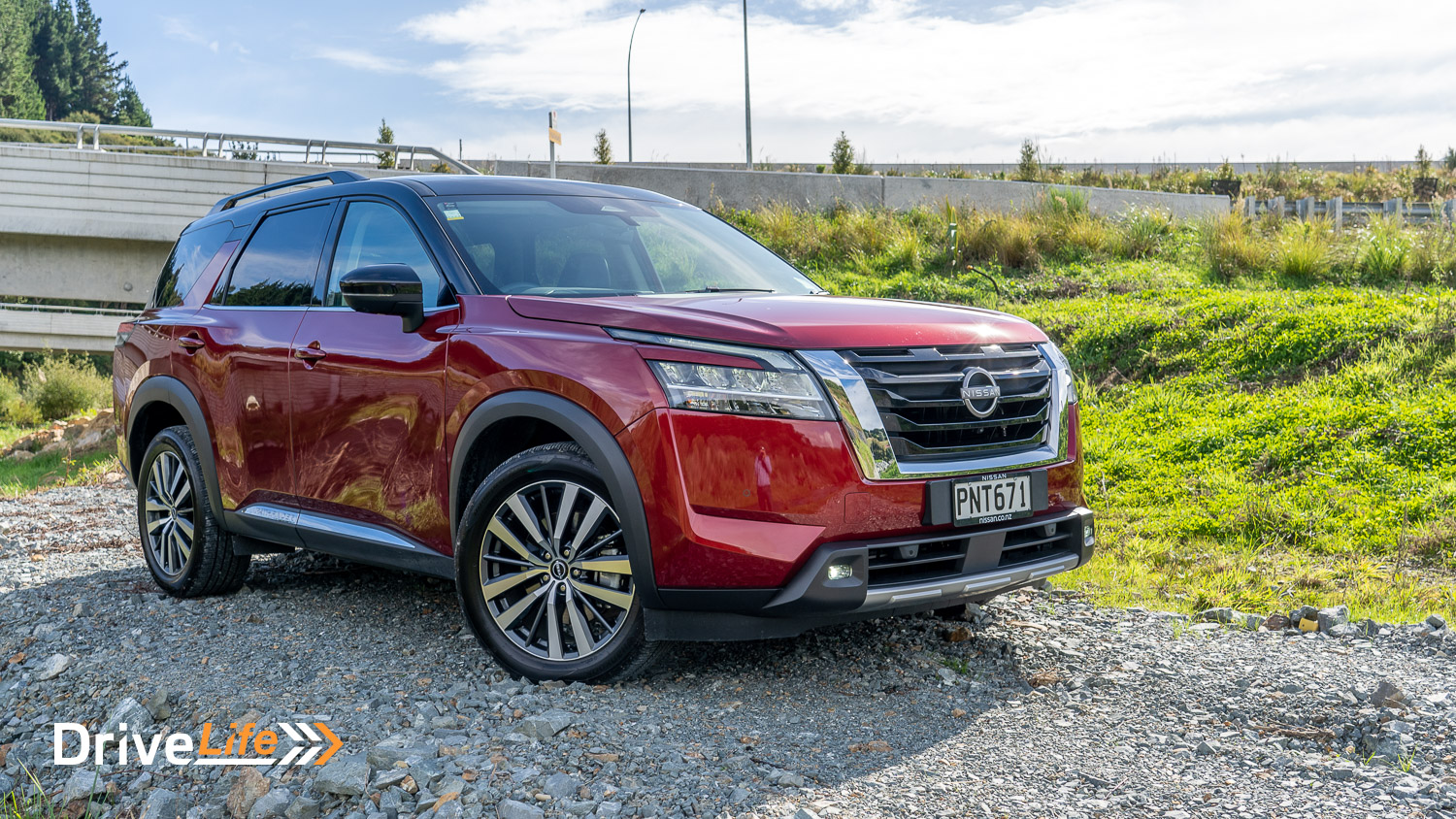
2023 Nissan Pathfinder Ti-L – Specifications
| Vehicle Type | Medium-Large SUV |
| Starting Price | $88,490 |
| Price as Tested | $88,490 |
| Engine | 3.5-litre, V6 petrol |
| Power, Torque kW/Nm | 202@6,400rpm 340@4,800rpm |
| Transmission | 9-speed automatic |
| Spare Wheel | Space saver |
| Kerb Weight, Kg | 2,044 |
| Length x Width x Height mm | 5004x1978x1802 |
| Boot Space / Cargo Capacity, Litres (seats up/seats down) | 205/557/782 |
| Fuel tank capacity, litres | 71 |
| Fuel Economy, L/100km | Advertised Spec – Combined – 11.7 Real-World Test – Combined – 9.4 Low Usage: 0-6 / Medium Usage 6-12 / High Usage 12+ |
| Towing Capacity Kg, unbraked/braked | 750/2,700 |
| Turning circle metres | 11.8 Small: 6-10m / Medium 10-12m / Large 12m+ |
| Warranty | 5-years 150,000KM transferable warranty5 years Roadside Assistance |
| Safety information | ANCAP Rating – 5 stars – Link Rightcar.govt.nz – 5 Stars – PNT671 |
Have you enjoyed this review? Be sure to join our monthly email newsletter list so you don’t miss a single car review!


